
Voyager 1 enters interstellar space in an illustration. The NASA spacecraft officially crossed into the space between the stars in 2012.

Both of NASA's Voyager spacecraft are now interstellar. Where to next?
Launched in 1977, the twin probes will likely outlive the sun. Find out what star systems they’ll meet as they head deeper into the galaxy.
NASA’s twin Voyager spacecraft have been traveling the interstellar road for more than 40 years, sweeping past the giant planets of the outer solar system before heading to the very fringes of our sun’s domain. Now, one probe has achieved a milestone in exploration: On December 10, NASA announced that Voyager 2 has entered interstellar space , six years after Voyager 1 first crossed the threshold. The twins are the only two spacecraft ever to venture so far from home.
To confirm Voyager 2's exit, scientists analyzed data from the spacecraft's Plasma Science Experiment , which measured the heliopause—the boundary between the sun's protective plasma bubble and interstellar space. On November 5, the instrument recorded a steep decline in particles from the sun's plasma. At the same time, Voyager 2 saw more high-energy particles from elsewhere in the galaxy, confirming that the probe had left our cosmic cul-de-sac.
"Working on Voyager makes me feel like an explorer, because everything we're seeing is new," MIT researcher John Richardson, the principal investigator for the plasma experiment, said in a statement . "Even though Voyager 1 crossed the heliopause in 2012, it did so at a different place and a different time, and without the PLS data. So we're still seeing things that no one has seen before."
But even at more than 11 billion miles from the sun, the Voyagers’ story is just beginning. On their current paths, both probes will still be heading outward across the galaxy eons after they escape the gravitational tug of the sun, and perhaps long after our star dies in four or five billion years. Should the spacecraft ever be intercepted by an alien civilization, two golden records bearing the sights and sounds of planet Earth could play the last whispers of a long-dead planet.
Assuming they stay on course, it’s going to be a lonely trip for the Voyagers, because even though our Earthly skies appear to glitter with countless pinpricks of light, space is mostly empty. Distances between the stars are so vast that even when our galaxy smashes into the one next door , not much will happen in the way of stellar collisions.
Still, according to astronomers’ predictions, their cosmic treks will bring the Voyagers close to several starry milestones and a dust cloud or three over the next hundred thousand or so years. Here are some of the known cosmic landmarks the Voyagers could meet in their relatively near futures.
Introducing Nat Geo Kids Book Bundle!
Launched from Cape Canaveral, Florida, on August 20, 1977, the dairy cow-size Voyager 2 began its odyssey with a grand tour of the outer solar system, making vital discoveries at Jupiter and Saturn and returning some of the best views yet of Uranus and Neptune.
The probe is now dipping below the plane of the solar system at roughly 34,500 miles an hour and heading celestially south, toward the constellation Sagittarius. On November 5, 2018, it crossed the heliopause, exiting the sun’s protective plasma bubble.
Voyager 2 may be freshly interstellar, but it won’t be anywhere near another star until 40,000 years from now, when it will pass within 1.7 light-years of the small red dwarf star Ross 248. At that point, Ross 248 will be the closest star to our sun, briefly eclipsing the Alpha Centauri system’s claim to fame as its path through the galaxy brings it just 3.02 light-years away.
About 61,000 years from now, Voyager 2 will pass beyond the Oort Cloud—a large, diffuse swarm of icy objects that is thought to extend as far as 200,000 times farther from the sun than Earth, says Wesleyan University’s Seth Redfield .
Voyager 2 may be freshly interstellar, but it won’t be anywhere near another star until 40,000 years from now.
Most scientists think the Oort cloud is the source of comets that take thousands of years to complete one orbit around the sun. It could also be the true boundary of the solar system, if you consider that to be the point where the sun’s gravitational influence drops off.
“The outer edge of the Oort Cloud is approximately where that is,” says Redfield, who has used the Hubble Space Telescope to study the Voyagers’ paths in detail for the next hundred thousand years, and more crudely for the next several million.
Next, in the year 298,000 Voyager 2 will swing within about four light-years of Sirius, the brightest star in Earth’s sky. It’ll then brush by two stars, delta Pav and GJ 754, about a hundred thousand years later.
Voyager 1 followed its twin into the sky on September 5, 1977. It rendezvoused with Jupiter and Saturn in 1979 and 1980, returning some spectacular views of volcanoes erupting on the Jovian moon Io, then continued outward.
You May Also Like

Why go back to the moon? NASA’s Artemis program has even bigger ambitions

'The sky is opening up': NASA's Webb Telescope captures jaw-dropping views of the cosmos

Why NASA's high-stakes maneuver to redirect an asteroid surprised its own scientists
On February 14, 1990, it swiveled to capture the solar system retreating from its view, including a series of images that revealed our pale blue planet looking like “a mote of dust suspended in a sunbeam,” according to Carl Sagan.
Now traveling more than 35,000 miles an hour in the direction of the constellation Ophiuchus, Voyager 1 is the fastest human-made object in space. In 2013, it became the first spacecraft to leave the heliosphere and cross into interstellar space.
In the year 40,272, the spacecraft will sail within 1.7 light-years of the star Gliese 445 in the constellation Camelopardalis.
In 56,000 years, Voyager 1 will exit the Oort cloud, then brush by the stars GJ 686 and GJ 678 in 570,000 years.
Wandering Wonders
Beyond that, both spacecraft will continue on their journeys outward, passing through scattered dust clouds on their way through the local bubble, a cavern of relatively empty space blown by tempestuous dying stars. They’ll exit this bubble in 5.7 and 6.3 million years, respectively.
From there, things get murky. The peculiar motions of stars and dust clouds orbiting the galactic center aren’t well known yet, and the spacecraft could be slowed by sailing through dust clouds. Plus, gravitational encounters with things like wandering, starless planets could bounce the probes around like billiard balls.
“There may be a whole population of rogue planets out in interstellar space,” Redfield says. “A mildly close encounter with one of those could change the itinerary of the Voyagers.”
Ultimately, like the stars in the Milky Way, the Voyagers will march to the galaxy’s tune and orbit its core for the rest of their lives.
“All the stars in the solar neighborhood are in an orbit around the center of the Milky Way, with orbital periods of 225 to 250 million years,” says Voyager project scientist Ed Stone . “The Voyagers will also be in such independent orbits, completing an orbit every 225 million years for billions of years until a collision with another galaxy disrupts this orderly flow.”
That might occur in four billion years, when the neighboring Andromeda galaxy smashes into the Milky Way and rearranges our skies in spectacular ways.
How the Voyagers’ ultimate demise occurs—whether it’s death by a thousand micrometeorite impacts, or one large improbable collision—remains a mystery. It’s even possible the Voyagers will outlive the solar system, surviving long after the sun’s death sculpts our neighborhood into a dramatically different place.
“The universe tends to do a great job of preserving its occupants,” Redfield says. After all, “the objects in our solar system, even small objects, have been around for 4.5 billion years.”
Related Topics

Why NASA’s Interstellar Mission Almost Didn’t Happen

U.S. returns to the moon as NASA's Odysseus successfully touches down

What is causing these massive, mysterious explosions in space?
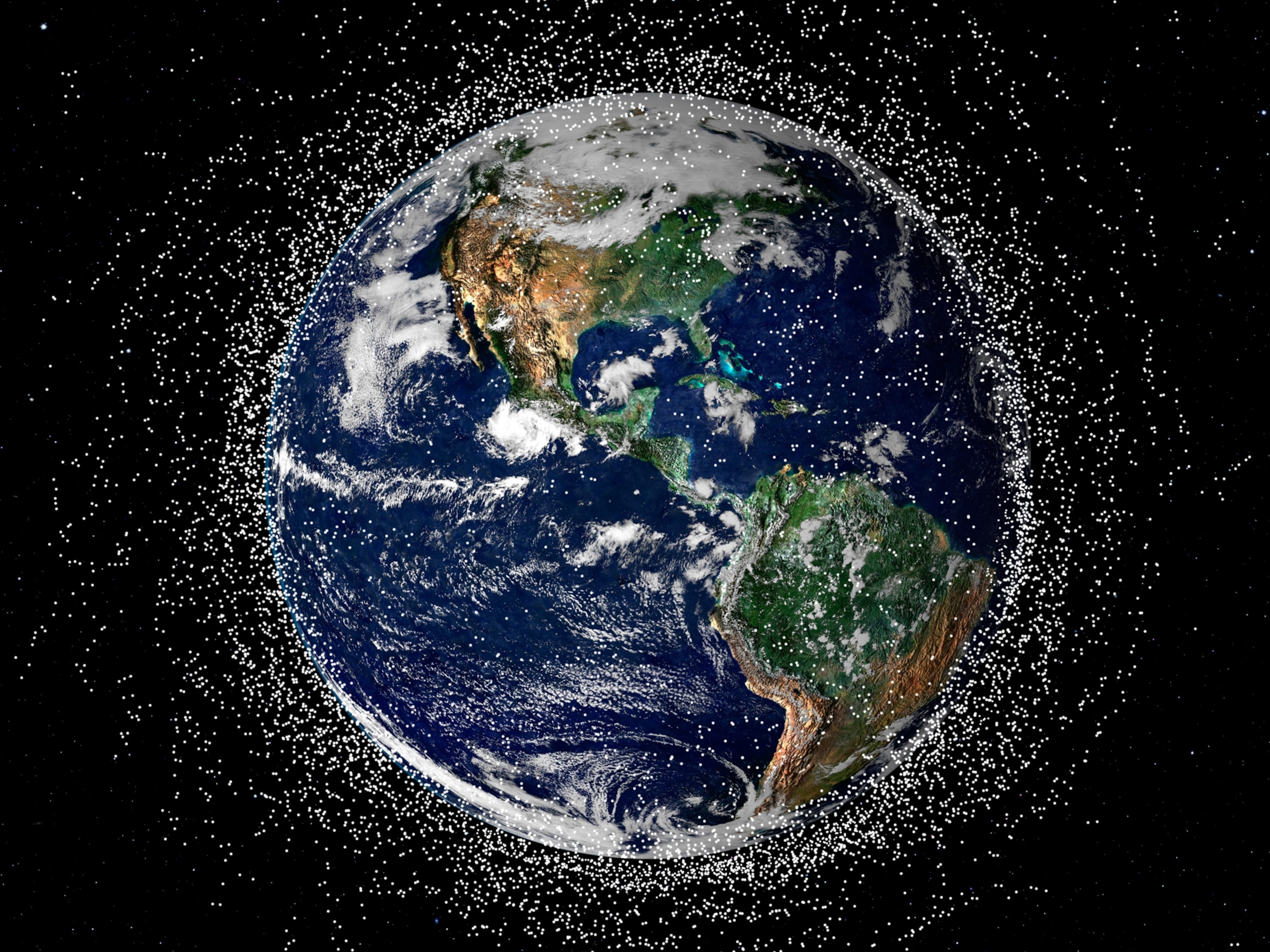
NASA has a plan to clean up space junk—but is going green enough?

The world’s most powerful telescope is rewriting the story of space and time
- Environment
- Paid Content
History & Culture
- History & Culture
- History Magazine
- Mind, Body, Wonder
- Terms of Use
- Privacy Policy
- Your US State Privacy Rights
- Children's Online Privacy Policy
- Interest-Based Ads
- About Nielsen Measurement
- Do Not Sell or Share My Personal Information
- Nat Geo Home
- Attend a Live Event
- Book a Trip
- Inspire Your Kids
- Shop Nat Geo
- Visit the D.C. Museum
- Learn About Our Impact
- Support Our Mission
- Advertise With Us
- Customer Service
- Renew Subscription
- Manage Your Subscription
- Work at Nat Geo
- Sign Up for Our Newsletters
- Contribute to Protect the Planet
Copyright © 1996-2015 National Geographic Society Copyright © 2015-2024 National Geographic Partners, LLC. All rights reserved
NASA’s Voyager 1 Resumes Sending Engineering Updates to Earth

NASA’s Voyager 1 spacecraft is depicted in this artist’s concept traveling through interstellar space, or the space between stars, which it entered in 2012.
After some inventive sleuthing, the mission team can — for the first time in five months — check the health and status of the most distant human-made object in existence.
For the first time since November , NASA’s Voyager 1 spacecraft is returning usable data about the health and status of its onboard engineering systems. The next step is to enable the spacecraft to begin returning science data again. The probe and its twin, Voyager 2, are the only spacecraft to ever fly in interstellar space (the space between stars).
Voyager 1 stopped sending readable science and engineering data back to Earth on Nov. 14, 2023, even though mission controllers could tell the spacecraft was still receiving their commands and otherwise operating normally. In March, the Voyager engineering team at NASA’s Jet Propulsion Laboratory in Southern California confirmed that the issue was tied to one of the spacecraft’s three onboard computers, called the flight data subsystem (FDS). The FDS is responsible for packaging the science and engineering data before it’s sent to Earth.

After receiving data about the health and status of Voyager 1 for the first time in five months, members of the Voyager flight team celebrate in a conference room at NASA’s Jet Propulsion Laboratory on April 20.
The team discovered that a single chip responsible for storing a portion of the FDS memory — including some of the FDS computer’s software code — isn’t working. The loss of that code rendered the science and engineering data unusable. Unable to repair the chip, the team decided to place the affected code elsewhere in the FDS memory. But no single location is large enough to hold the section of code in its entirety.
So they devised a plan to divide the affected code into sections and store those sections in different places in the FDS. To make this plan work, they also needed to adjust those code sections to ensure, for example, that they all still function as a whole. Any references to the location of that code in other parts of the FDS memory needed to be updated as well.
The team started by singling out the code responsible for packaging the spacecraft’s engineering data. They sent it to its new location in the FDS memory on April 18. A radio signal takes about 22 ½ hours to reach Voyager 1, which is over 15 billion miles (24 billion kilometers) from Earth, and another 22 ½ hours for a signal to come back to Earth. When the mission flight team heard back from the spacecraft on April 20, they saw that the modification worked: For the first time in five months, they have been able to check the health and status of the spacecraft.
Get the Latest News from the Final Frontier
During the coming weeks, the team will relocate and adjust the other affected portions of the FDS software. These include the portions that will start returning science data.
Voyager 2 continues to operate normally. Launched over 46 years ago , the twin Voyager spacecraft are the longest-running and most distant spacecraft in history. Before the start of their interstellar exploration, both probes flew by Saturn and Jupiter, and Voyager 2 flew by Uranus and Neptune.
Caltech in Pasadena, California, manages JPL for NASA.
News Media Contact
Calla Cofield
Jet Propulsion Laboratory, Pasadena, Calif.
626-808-2469

- [ 30 April 2024 ] JWST captures zooms in on the ‘mane’ of the iconic Horsehead Nebula News
- [ 25 April 2024 ] NASA’s Voyager 1 probe calls home after five months News
- [ 22 February 2024 ] Commercial lunar lander returns America to the Moon News
- [ 7 November 2023 ] First colour images from Euclid space telescope get rave reviews News
- [ 11 September 2023 ] The Great Square of Pegasus: heralding autumn News
NASA’s Voyager 1 probe calls home after five months

For the first time in five months, NASA’s Voyager 1 spacecraft is returning usable data about the health and status of its onboard engineering systems. The next step is to enable the spacecraft to begin returning science data again. The probe and its twin, Voyager 2, are the only spacecraft to depart the Solar System and fly in interstellar space.
Voyager 1 stopped sending readable science and engineering data back to Earth on 14th November 2023, although ground controllers could tell the spacecraft was still receiving their commands and otherwise operating normally. In March, the Voyager engineering team at NASA’s Jet Propulsion Laboratory in Southern California confirmed that the issue was tied to one of the spacecraft’s three onboard computers, called the Flight Fata Subsystem (FDS). The FDS is responsible for packaging the science and engineering data before it’s sent to Earth.
The team discovered that a single chip responsible for storing a portion of the FDS memory — including some of the FDS computer’s software code — isn’t working. The loss of that code rendered the science and engineering data unusable. Unable to repair the chip, the team decided to place the affected code elsewhere in the FDS memory. But no single location is large enough to hold the section of code in its entirety.
So they devised a plan to divide the affected code into sections and store those sections in different places in the FDS. To make this plan work, they also needed to adjust those code sections to ensure that they all still function as a whole. Any references to the location of that code in other parts of the FDS memory needed to be updated as well.

The team started by singling out the code responsible for packaging the spacecraft’s engineering data. They sent it to its new location in the FDS memory on 18th April. A radio signal takes about 22.5 hours to reach Voyager 1, which is over 15 billion miles (24 billion kilometres) from Earth, and another 22.5 hours for a signal to come back to Earth. When the mission flight team heard back from the spacecraft on 20th April, they saw that the modification worked: For the first time in five months, they have been able to check the health and status of the spacecraft.
Voyager 2 continues to operate normally. Launched over 46 years ago, the twin Voyager spacecraft are the longest-running and most distant spacecraft from Earth in history. Before the start of their interstellar exploration, both probes flew by Saturn and Jupiter, and Voyager 2 flew by Uranus and Neptune.
Source: JPL News Release
© 2019 Pole Star Publications Limited

Boeing Starliner’s crew is now on the space station after encountering new issues en route
Sign up for CNN’s Wonder Theory science newsletter. Explore the universe with news on fascinating discoveries, scientific advancements and more .
Boeing’s Starliner mission has safely docked with the International Space Station and the spacecraft’s crew, NASA astronauts Butch Wilmore and Suni Williams, have arrived aboard the station after overcoming new issues that cropped up overnight and Thursday en route to the orbiting laboratory.
This is the first time astronauts have arrived at the space station via a Boeing Starliner spacecraft.
Docking occurred at 1:34 p.m. ET. Steps were taken to more firmly secure the connection between Starliner and the space station’s port, and docking was completed about 20 minutes later.
“Nice to be attached to the big city in the sky,” Wilmore said after docking was confirmed.
Pressure was equalized between Starliner and the station, and the hatch between the two opened at about 3:46 p.m. ET.
Wilmore and Williams were welcomed with a ringing bell and plenty of hugs from the seven astronauts and cosmonauts already on board. With their arrival, there are now nine people working and living on the ISS.
“I’m not sure we could have gotten a better welcome,” Wilmore said during welcoming remarks after the entire station crew assembled. “We had music. Matt was dancing. It was great. What a wonderful place to be back.”
Wilmore shared his thanks “to all of you who got us going and kept us going,” including those in NASA mission control, Boeing and United Launch Alliance.
“These organizations are the epitome of teamwork, and it’s a blessing and a privilege to be a part of it,” he said.
Williams also shared her gratitude to the family and friends who have been with them during the lead-up to launch.
“We have another family up here, which is just awesome,” Williams said. “And we’re just happy as can be to be up in space, one in Starliner on an Atlas V, and then here at the International Space Station. It just doesn’t get much better.”
“The launch yesterday and docking today puts the Starliner on a path to certification to enabling continued exploration and science that benefits humanity,” said Jim Free, NASA Associate Administrator, during a news conference Thursday.
“For Butch and Suni, I want to thank them for the years they have spent to getting us to this point, the expertise they bring to their roles and their dedication to the task of advancing human spaceflight,” he added.
The duo will spend the next eight days on the orbiting laboratory.
The crew brought a much-needed replacement pump that processes urine aboard the station and turns it into drinking water. The station crew will try to put the new pump into place tomorrow, said Jeff Arend, manager for systems engineering and integration in NASA’s International Space Station Office.
Delayed arrival
After a successful launch that was a decade in the making, Boeing’s Starliner mission experienced helium leaks and a temporary loss of thrusters during its journey to the space station, according to NASA.
During the final hour of their approach to the space station, Starliner’s crew began to manually pilot the spacecraft in a planned test of Starliner’s manual flight control capability. Five of the reaction control system thrusters failed on the service module, but the duo was able to get four of the thrusters firing again after conducting hot-fire tests.
These smaller thrusters are used as the spacecraft moves closer to the space station so it can make more finely tuned changes to its trajectory. There are 28 total such thrusters located on the service module, or the lower portion of Starliner, which will not return to Earth.
Starliner was expected to dock at the space station by 12:15 p.m. ET, but the thruster issue caused a delay of an hour and 15 minutes, and the mission moved on to a new docking window.
During testing of the thrusters, Starliner maintained a distance of about 820 feet (250 meters) from the space station until it was deemed “orbit-safe,” away from a 656-foot (200-meter) invisible “keep out” boundary designated to protect the station.
“We don’t necessarily understand exactly why we lost the jets,” said Steve Stich, manager for NASA’s Commercial Crew Program. “The software sees something that it doesn’t like about that thruster — maybe a little less thrust or the thrust rise rate doesn’t come up exactly the way that the software is looking for. And so what the software does, it says, ‘I won’t use that thruster anymore.’”
The team will continue to evaluate the data behind the software that deselected the thrusters when they didn’t meet certain conditions set by the software, said Mark Nappi, vice president and program manager of the Commercial Crew Program for Boeing.
Starliner also faced another issue on its journey: helium leaks.
The space agency said late Wednesday in a post on X , formerly known as Twitter, that two additional helium leaks had been detected on the vehicle. One helium leak had been discovered prior to launch and deemed acceptable.
“Helium is used in spacecraft thruster systems to allow the thrusters to fire and is not combustible or toxic,” according to Boeing.
As of Thursday morning, two of the three leaks have been corrected, according to a live NASA broadcast. A fourth minor leak was discovered later as well, Stich said.
Mission managers polled “go” for rendezvous and docking with the space station, and the leaks were not expected to impact docking, according to the broadcast.
“During all of Starliner’s rendezvous and proximity operations, we’ll keep those propellant manifolds open, but they’ll stay open until docking. Starliner’s currently maintaining plenty of helium reserves,” Boeing aerospace engineer Jim May confirmed Thursday morning in a social media post on X shared by Boeing.
“Currently the helium leak is not a safety issue for the crew, the vehicle or the mission.”
The flight control team will continue to monitor the leak rates in Starliner’s propulsion system and after docking, all of Starliner manifolds were closed per normal plans and currently, there are no active leaks, according to NASA .
“What we need to do over the next few days is take a look at the leak rate there and figure out what we go do relative to the rest of the mission,” he said. “I think we have some tools in our toolkit to manage this. We’ll take a little time to go, assess it and we’ll undock and land when we’re ready.”
There may be some commonality between the leaks, Nappi said.
“Now that we’re in flight and we’ve seen a couple more leaks, if it is a common cause across those flanges, then there might be something more to the flange itself, maybe a bad lot of seals or some other variable,” he said.
Stich said the problems Starliner is facing is not unlike the first crewed flight of NASA’s Space Shuttle Program, or other test flights of spacecraft rated to take humans to space.
“We have two problems on this vehicle: The helium leak and figuring out how to fine tune these thrusters so that they’re not selected off,” Nappi said. “Those are pretty small issues to deal with and we’ll figure them out for the next mission. So I don’t see these as significant at all.”
Late night leaks
Just as Wilmore and Williams were about to go to sleep Wednesday night, mission control informed them that they needed to shut down two valves due to the new helium leaks.
“Teams have identified three helium leaks on the spacecraft. One of these was previously discussed before flight along with a management plan,” NASA shared in the post. “The other two are new since the spacecraft arrived on orbit. Two of the affected helium valves have been closed and the spacecraft remains stable.”
A related exchange had taken place earlier on the NASA broadcast .
“Looks like we picked up a couple more helium leaks,” mission control told the astronauts, as heard on the broadcast. Controllers then walked the crew through the plan to shut down the valves.
“Butch, I’m sorry. We’re still getting the story together,” mission control replied.
“We are ready to … find out exactly what you mean by picked up another helium leak, so give it to us,” Wilmore told them.
NASA and Boeing determined the crew was safe and told the duo to go to sleep while they continue to look at the data. The crew was supposed to sleep for nine hours, but the troubleshooting effort cut into an hour of rest time.
“We have some issues to watch overnight when in regards to the helium leaks that was just brought up, and we have a lot of smart people down here on the ground that are going to take a look at this stuff and keep an eye on it, but the vehicle is in a configuration right now where they’re safe to fly,” Boeing aerospace engineer Brandon Burroughs said on the NASA broadcast.
Historic launch
Starliner’s highly anticipated voyage lifted off atop an Atlas V rocket Wednesday at 10:52 a.m. ET from Cape Canaveral Space Force Station in Florida. The historic launch marked the first time the spacecraft has carried a crew to space.
The mission, known as the Crew Flight Test, is the culmination of Boeing’s efforts to develop a spacecraft to rival SpaceX’s Crew Dragon capsule and expand the United States’ options for ferrying astronauts to the space station under NASA’s Commercial Crew Program. The federal agency’s initiative aims to foster collaboration with private industry partners.
The flight marks only the sixth inaugural journey of a crewed spacecraft in US history, NASA Administrator Bill Nelson noted in a May news conference.
“It started with Mercury, then with Gemini, then with Apollo, the space shuttle, then (SpaceX’s) Dragon — and now Starliner,” Nelson said.
Williams also made history as the first woman to fly aboard such a mission.
“This is another milestone in this extraordinary history of NASA,” Nelson said Wednesday after the launch. “And I want to give my personal congratulations to the whole team that went through a lot of trial and tribulation. But they had perseverance and that’s what we do at NASA. We don’t launch until it’s right.”
Just after Wednesday’s launch, NASA officials shared that Williams and Wilmore may enjoy a slightly extended stay aboard the station. The earliest possible landing date is June 14.
“We’ve got a prescribed landing date that goes along with this launch date, but I just want to emphasize that nobody should get too excited about that date,” said Ken Bowersox, associate administrator for NASA’s Space Operations Mission Directorate. “We have to have a lot of conditions that are just right before we bring the Starliner home and we’re going to wait till the conditions are right and we’ve accomplished the test objectives before we do that.”
Weeks of troubleshooting
A number of issues caused the previous crewed launch attempts, on May 6 and June 1, to be scrubbed.
Two hours prior to the launch attempt on May 6, engineers identified an issue with a valve on the second stage, or upper portion, of the Atlas V rocket, which was built by United Launch Alliance, a joint venture between Boeing and Lockheed Martin. The entire stack, including the rocket and spacecraft, was rolled back from the launchpad for testing and repairs.
Teams also worked through a small helium leak within the spacecraft service module and a “ design vulnerability ” in the propulsion system.
After troubleshooting the initial helium leak in May, mission specialists found it did not pose a threat to the flight. During the launch countdown Wednesday morning, teams monitored the leak and reported no issues.
Starliner was just 3 minutes and 50 seconds from liftoff Saturday afternoon, when an automatic hold was triggered by the ground launch sequencer, or the computer that launches the rocket.
United Launch Alliance technicians and engineers assessed the ground support equipment over the weekend, examining three large computers housed inside a shelter at the base of the launchpad. Each computer is the same, providing triple redundancy to ensure the safe launch of crewed missions.
Engineers isolated the issue that halted Saturday’s launch attempt to a single ground power supply within one of the computers, which provides power to the computer cards responsible for key countdown events, according to an update shared by NASA.
They removed the computer and replaced it with a spare.
For more CNN news and newsletters create an account at CNN.com

- Skip to main content
- Keyboard shortcuts for audio player
After long delays, Boeing's Starliner capsule and crew launch into space
Brendan Byrne
**IF IT DOES** BOEING STARLINER LAUNCHES

Boeing's Starliner capsule lifted off from the Kennedy Space Center in Cape Canaveral, Fla. on Wednesday. It's the first time the capsule, powered by an Atlas V rocket made by United Launch Alliance, has flown people. Two NASA astronauts are on board for a day-long trip to the International Space Station. This test flight is years behind scheduled and billions of dollars over budget. MIGUEL J. RODRIGUEZ CARRILLO/AFP via Getty Images/AFP hide caption
CAPE CANAVERAL, Fla. -- The third time was the charm.
Boeing’s long-delayed Starliner space capsule lifted off from the Cape Canaveral Space Force Station carrying two NASA astronauts and reached orbit about twelve minutes later. The crew will spend the next 25 hours racing to catch up to the International Space Station.
The mission marks the first time the commercially-built capsule is carrying humans, with a scheduled docking to the station Thursday around 12:15 p.m. ET, with astronauts Barry “Butch” Wilmore as commander and Sunita “Suni” Williams serving as mission pilot.
It was the third launch attempt of Starliner. On Saturday, the countdown was halted with less than four minutes left. An issue with the flight computers that control launch was to blame. Launch provider ULA replaced a power supply on the system and cleared it for Wednesday’s launch. It followed a launch attempt last month that was called off due to a misbehaving valve on the Atlas V rocket’s upper stage Centaur.
While fixing that issue, Boeing discovered another: a helium leak. The gas is used in Starliner’s propulsion system. After a review of the data, NASA was confident Boeing could successfully fly the mission.
With all those issues resolved, and Starliner on its way to the space station, it appears this third try is indeed the charm. Now launched, Wilmore and Williams are taking Starliner on its maiden flight, putting the vehicle through its paces ahead of operational missions for NASA. After the Space Shuttle retired in 2011, NASA partnered with two commercial companies -- Boeing and SpaceX -- to ferry astronauts to and from the space station.
But Boeing has lagged behind its commercial space transportation counterpart SpaceX, which has flown nine missions for NASA already and another four private flights. An uncrewed Starliner mission in 2019 failed to reach the station, in part due to faulty flight computer code. A re-flight of the launch in 2022 was considered a success by NASA and Boeing, but issues were later discovered in the capsule’s parachute systems.
An analysis also found tape used to manage the hundreds of feet of cabling within the spacecraft was flammable. Boeing fixed those issues and received NASA’s go-ahead to launch the crew
But that first attempt to launch this crewed mission last month was scrubbed due to an issue with the rocket responsible for giving Starliner its big boost into space.

NASA astronauts Butch Wilmore (L) and Suni Williams, wearing Boeing spacesuits, as they depart the operations and checkout building for the launchpad on Wednesday at the Kennedy Space Center in Florida. It's the third trip to space for both of them. MIGUEL J. RODRIGUEZ CARRILLO/AFP via Getty Images/AFP hide caption
Willmore and Williams will test key systems of Starliner as it docks with the space station, including life support and communication. While the spacecraft can essentially fly itself, the duo will test out manual controls of the vehicle as it approaches the orbiting outpost.
The crew will spend about a week aboard the station with a scheduled landing under a canopy of parachutes in the southwest U.S. Teams at NASA and Boeing will comb through the data from this flight before certifying the vehicle for operational mission. NASA plans to split astronaut flights between Boeing and SpaceX, with trips to the I.S.S. happening about every six months.

Interstellar Messengers
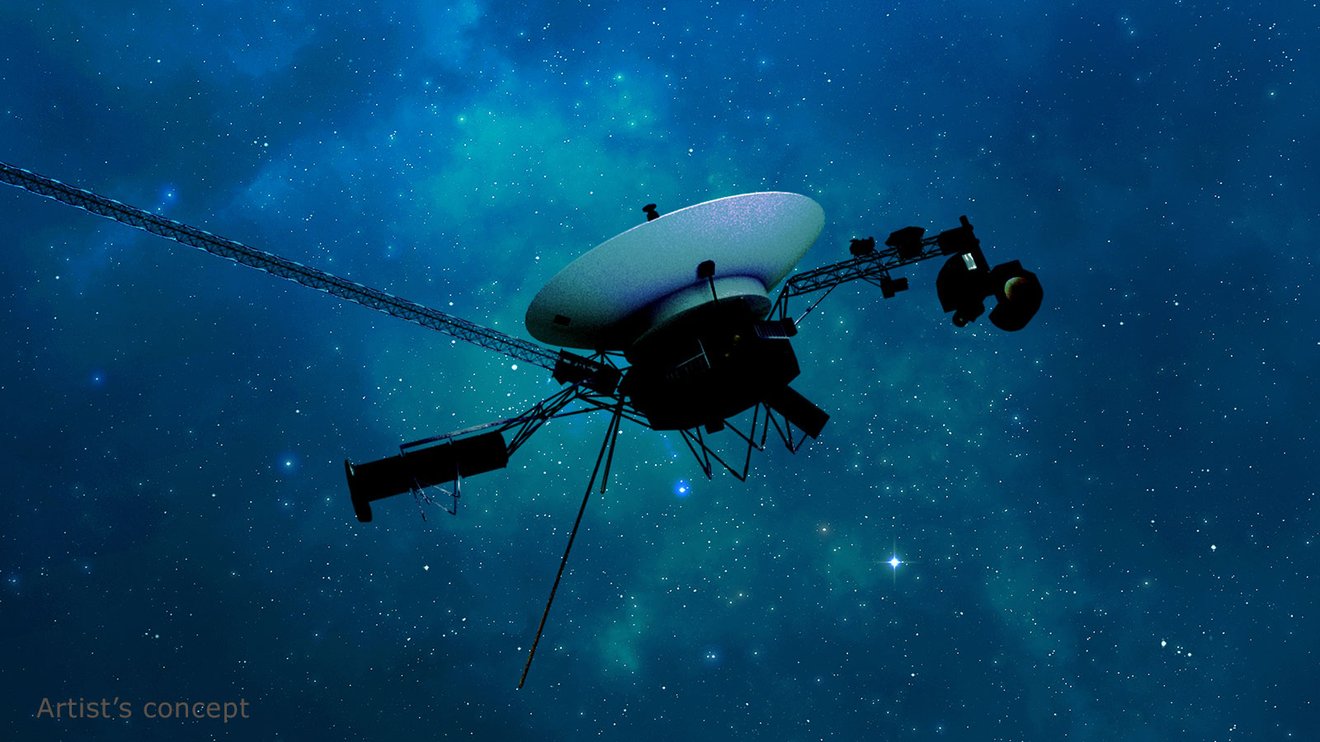
Voyager 1 and its twin Voyager 2 are the only spacecraft ever to operate outside the heliosphere, the protective bubble of particles and magnetic fields generated by the Sun. Voyager 1 reached the interstellar boundary in 2012, while Voyager 2 (traveling slower and in a different direction than its twin) reached it in 2018.
Mission Type
Science Targets
Voyager Blog
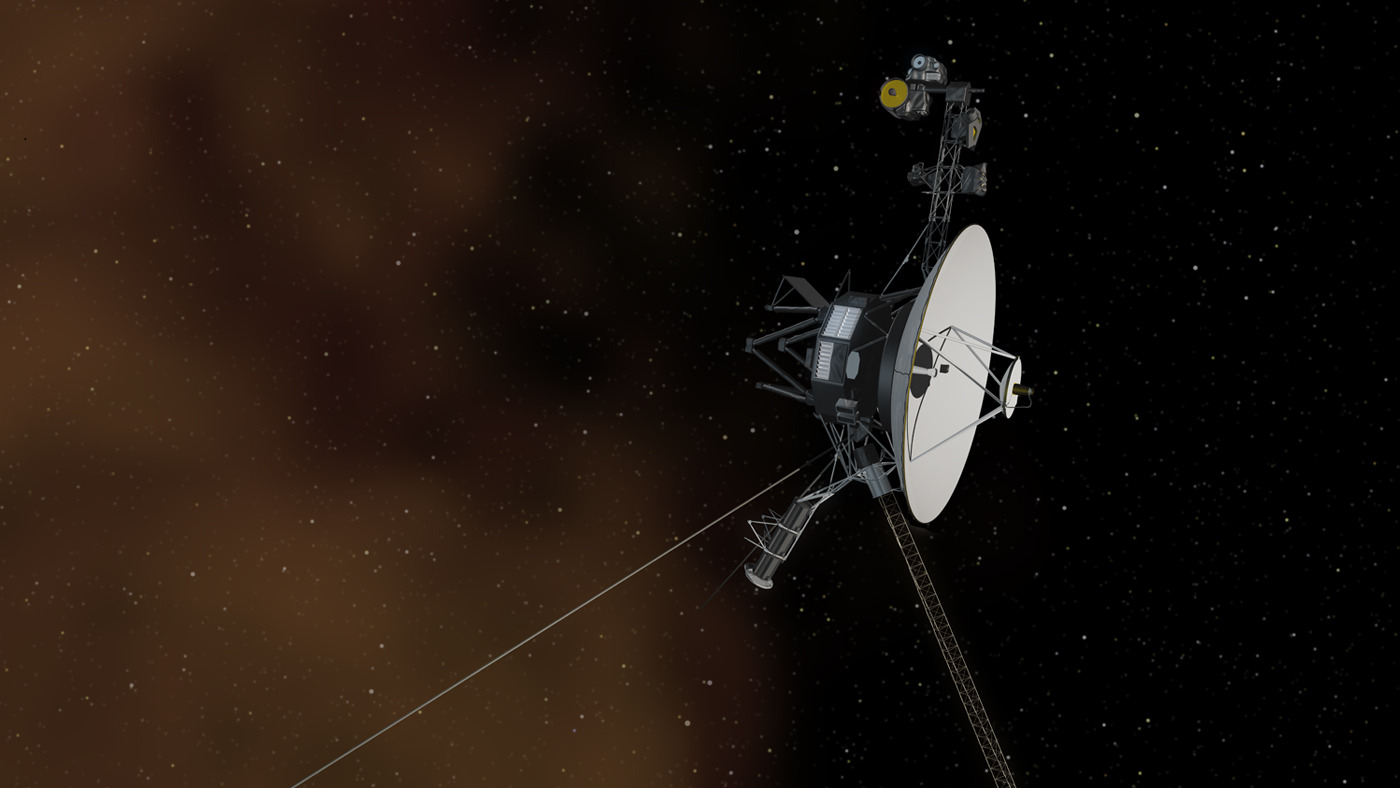
Mission Updates
Voyager 1 Resumes Sending Science Data from Two Instruments
Latest Voyager Program News
NASA’s Voyager Team Focuses on Software Patch, Thrusters
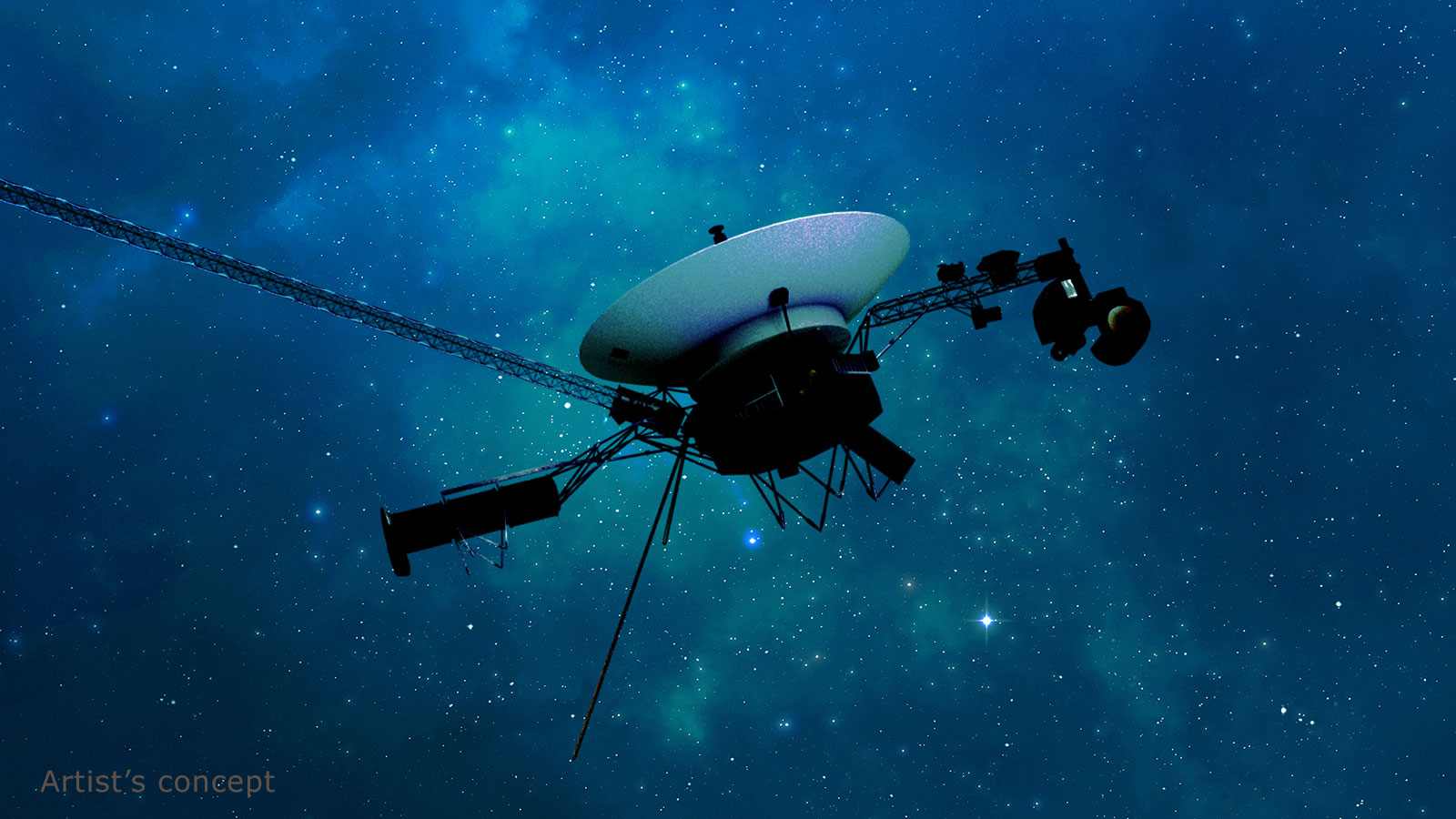
NASA Mission Update: Voyager 2 Communications Pause

NASA’s Voyager Will Do More Science With New Power Strategy
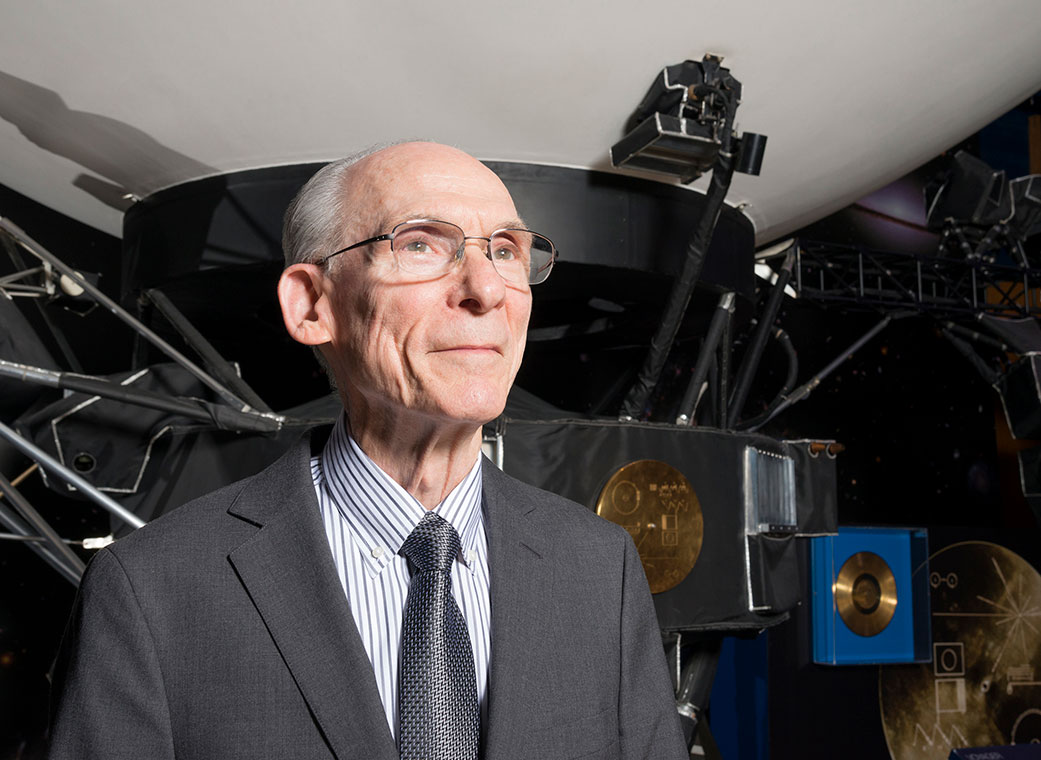
Edward Stone Retires After 50 Years as NASA Voyager’s Project Scientist
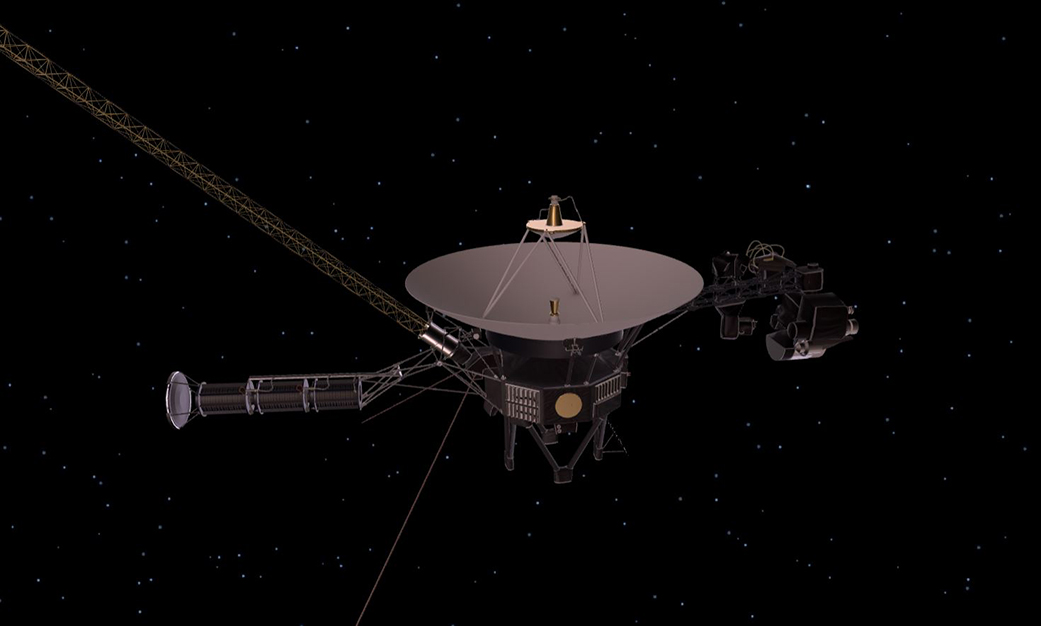
Engineers Solve Data Glitch on NASA’s Voyager 1
The Interstellar Mission
After completing the first in-depth reconnaissance of the outer planets, the twin Voyagers are on a new mission to chart the edge of interstellar space.
The Golden Record
The contents of the golden record were selected for NASA by a committee led by Carl Sagan of Cornell University.
The Spacecraft
The twin Voyagers are escaping our solar system in different directions at more than 3 astronomical units (AU) a year.
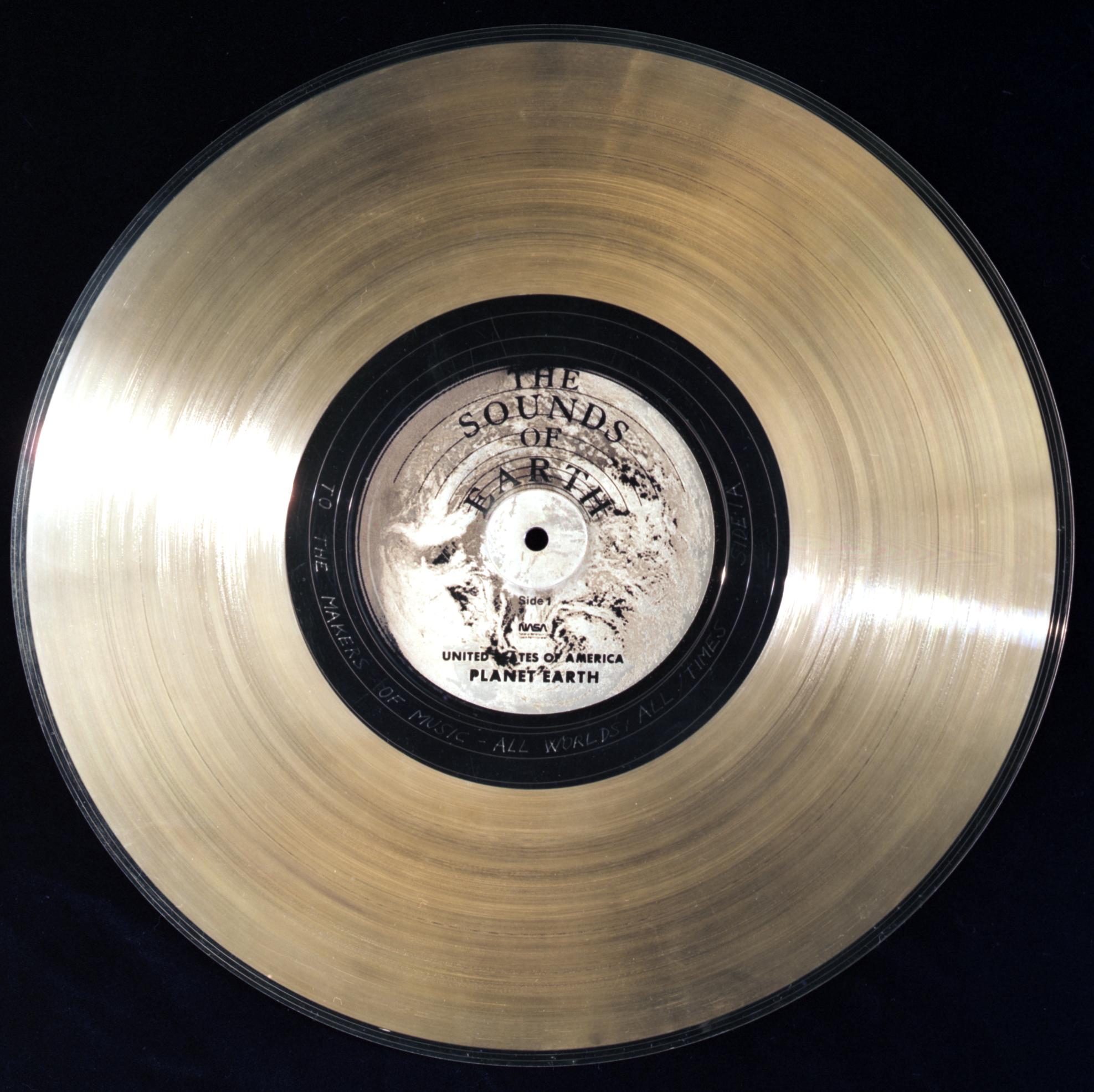
The Pale Blue Dot
The behind-the-scenes story of the making of Voyager 1's iconic image of Earth as "a mote of dust suspended in a sunbeam."
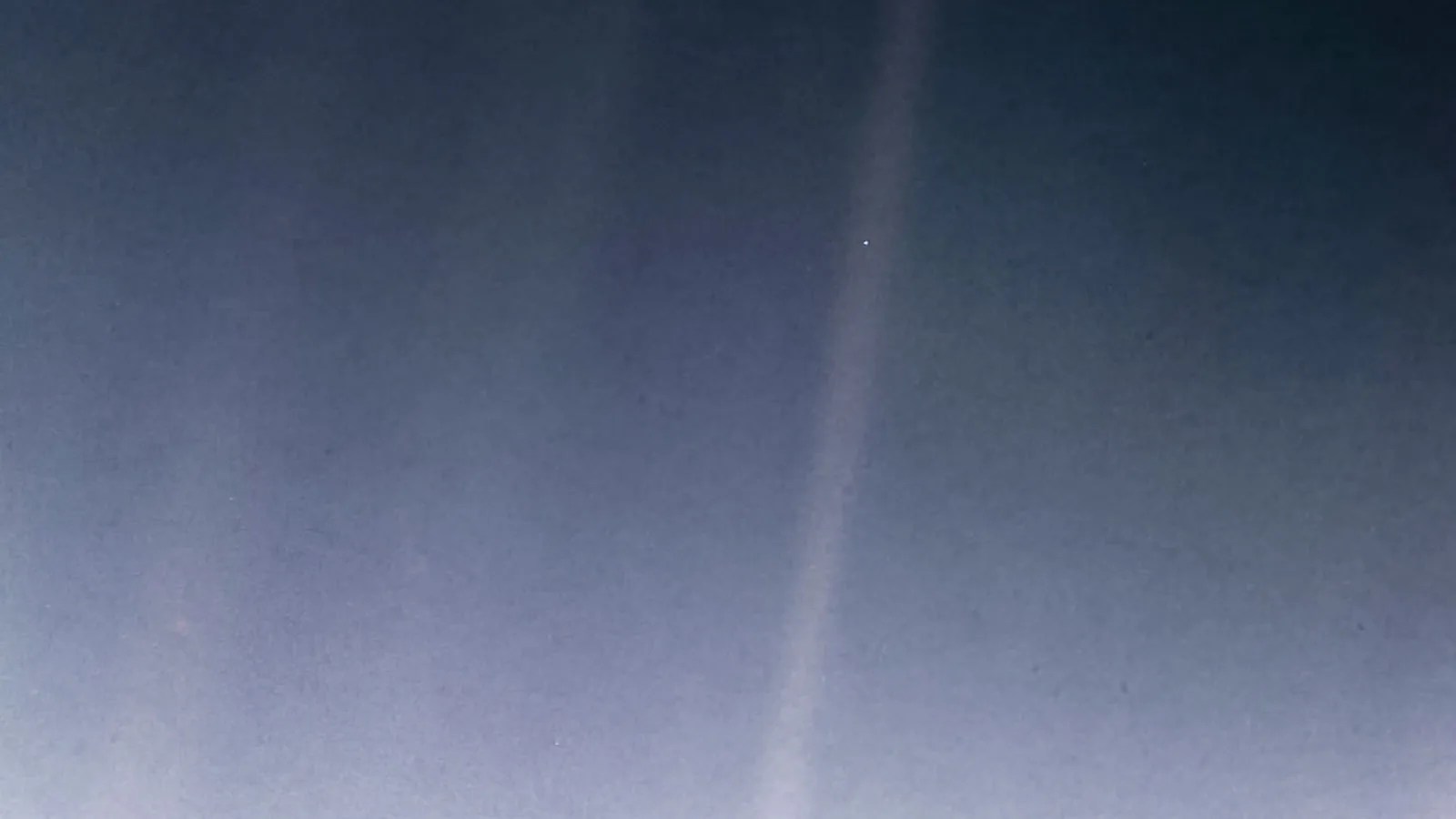
Discover More Topics From NASA

Our Solar System

Heliosphere
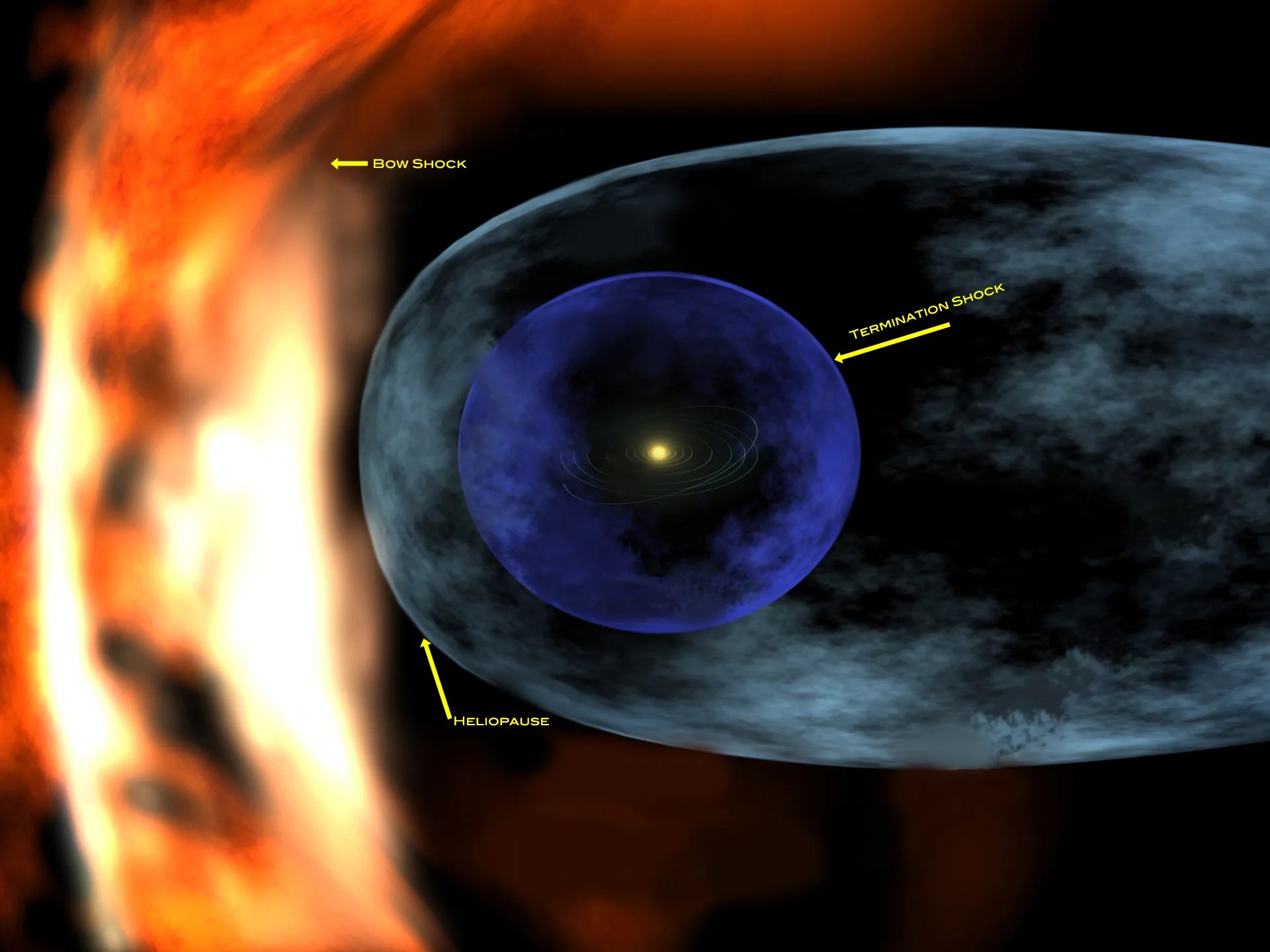
Boeing Starliner launch livestream: Watch as NASA sends 2 astronauts to ISS

Update: The Starliner spacecraft launched at 10:52 a.m. ET Wednesday from the Kennedy Space Center in Cape Canaveral, Florida.
After Saturday's launch for the Boeing Starliner spacecraft was scrubbed once again due to technological issues, a new launch date has been set for this week.
USA TODAY is providing live coverage of the Boeing Starliner launch, which is scheduled to liftoff Wednesday, June 5 at 10:52 a.m. ET from Cape Canaveral Space Force Station in Florida. You can watch the embedded video live at the top of the page or on USA TODAY's YouTube channel .
Launches are also streamed through NASA via NASA+ , NASA Television, the NASA app , on YouTube or on the agency's website , with live coverage beginning at 6:45 a.m. ET.
If Wednesday's launch date does not go as planned, another possible launch date is Thursday, June 6.
Live updates from Florida: Boeing Starliner attempts historic crewed launch from Cape Canaveral
The Saturday launch was scrubbed about 4 minutes before liftoff. In a post on X , NASA said the launch attempt was stopped "due to the computer ground launch sequencer not loading into the correct operational configuration after proceeding into terminal count."
This week's launch attempt follows several delays including a May 6 launch halted by a series of technical issues, an oxygen leak and a helium leak from the capsule's propulsion system.
A year behind and over budget: Timeline shows Boeing Starliner struggles and scrubs
Where is the Boeing Starliner going?
The Boeing Crew Flight Test is meant to carry two NASA astronauts : Barry "Butch" Wilmore and Sunita "Suni" Williams, both former Navy pilots, to and from the International Space Station.
Once on board, Wilmore and Williams will stay at the ISS for about a week to test the Starliner spacecraft and its subsystems.
What is the Boeing Starliner?
The Starliner was designed to accommodate a crew of no more than seven for missions to low-Earth orbit. On NASA missions, the capsule would carry four astronauts along with a mix of cargo and other scientific instruments to and from the space station.
If Starliner is successful, NASA will begin the final process of certifying the spacecraft and its systems for crewed rotation missions to the space station, according to the U.S. space agency .
Boeing was awarded $4.8 billion from NASA in 2014 to develop Starliner, a private industry-built vehicle that can ferry astronauts to and from the International Space Station.
Competitor, SpaceX, which recently saw the return of its eighth crew sent to the ISS, was awarded $3.1 billion to develop its respective spacecraft, as part of NASA’s commercial crew program . NASA has also paid SpaceX $2.9 billion to develop the first commercial human lander for the agency's Artemis moon missions and eventually trips to Mars.
Contributing: Eric Lagatta, USA TODAY

Suggested Searches
- Climate Change
- Expedition 64
- Mars perseverance
- SpaceX Crew-2
- International Space Station
- View All Topics A-Z
Humans in Space
Earth & climate, the solar system, the universe, aeronautics, learning resources, news & events.

NASA, Global Astronomers Await Rare Nova Explosion

NASA Scientists Take to the Seas to Study Air Quality

NASA to Change How It Points Hubble Space Telescope
- Search All NASA Missions
- A to Z List of Missions
- Upcoming Launches and Landings
- Spaceships and Rockets
- Communicating with Missions
- James Webb Space Telescope
- Hubble Space Telescope
- Why Go to Space
- Commercial Space
- Destinations
- Living in Space
- Explore Earth Science
- Earth, Our Planet
- Earth Science in Action
- Earth Multimedia
- Earth Science Researchers
- Pluto & Dwarf Planets
- Asteroids, Comets & Meteors
- The Kuiper Belt
- The Oort Cloud
- Skywatching
- The Search for Life in the Universe
- Black Holes
- The Big Bang
- Dark Energy & Dark Matter
- Earth Science
- Planetary Science
- Astrophysics & Space Science
- The Sun & Heliophysics
- Biological & Physical Sciences
- Lunar Science
- Citizen Science
- Astromaterials
- Aeronautics Research
- Human Space Travel Research
- Science in the Air
- NASA Aircraft
- Flight Innovation
- Supersonic Flight
- Air Traffic Solutions
- Green Aviation Tech
- Drones & You
- Technology Transfer & Spinoffs
- Space Travel Technology
- Technology Living in Space
- Manufacturing and Materials
- Science Instruments
- For Kids and Students
- For Educators
- For Colleges and Universities
- For Professionals
- Science for Everyone
- Requests for Exhibits, Artifacts, or Speakers
- STEM Engagement at NASA
- NASA's Impacts
- Centers and Facilities
- Directorates
- Organizations
- People of NASA
- Internships
- Our History
- Doing Business with NASA
- Get Involved
- Aeronáutica
- Ciencias Terrestres
- Sistema Solar
- All NASA News
- Video Series on NASA+
- Newsletters
- Social Media
- Media Resources
- Upcoming Launches & Landings
- Virtual Events
- Sounds and Ringtones
- Interactives
- STEM Multimedia
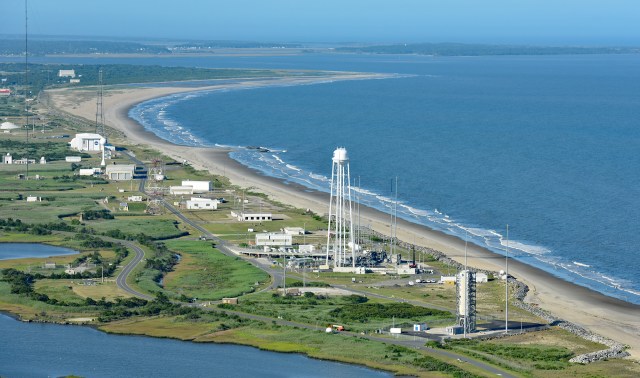
NASA Wallops to Support Sounding Rocket Launch
Nasa watches mars light up during epic solar storm.
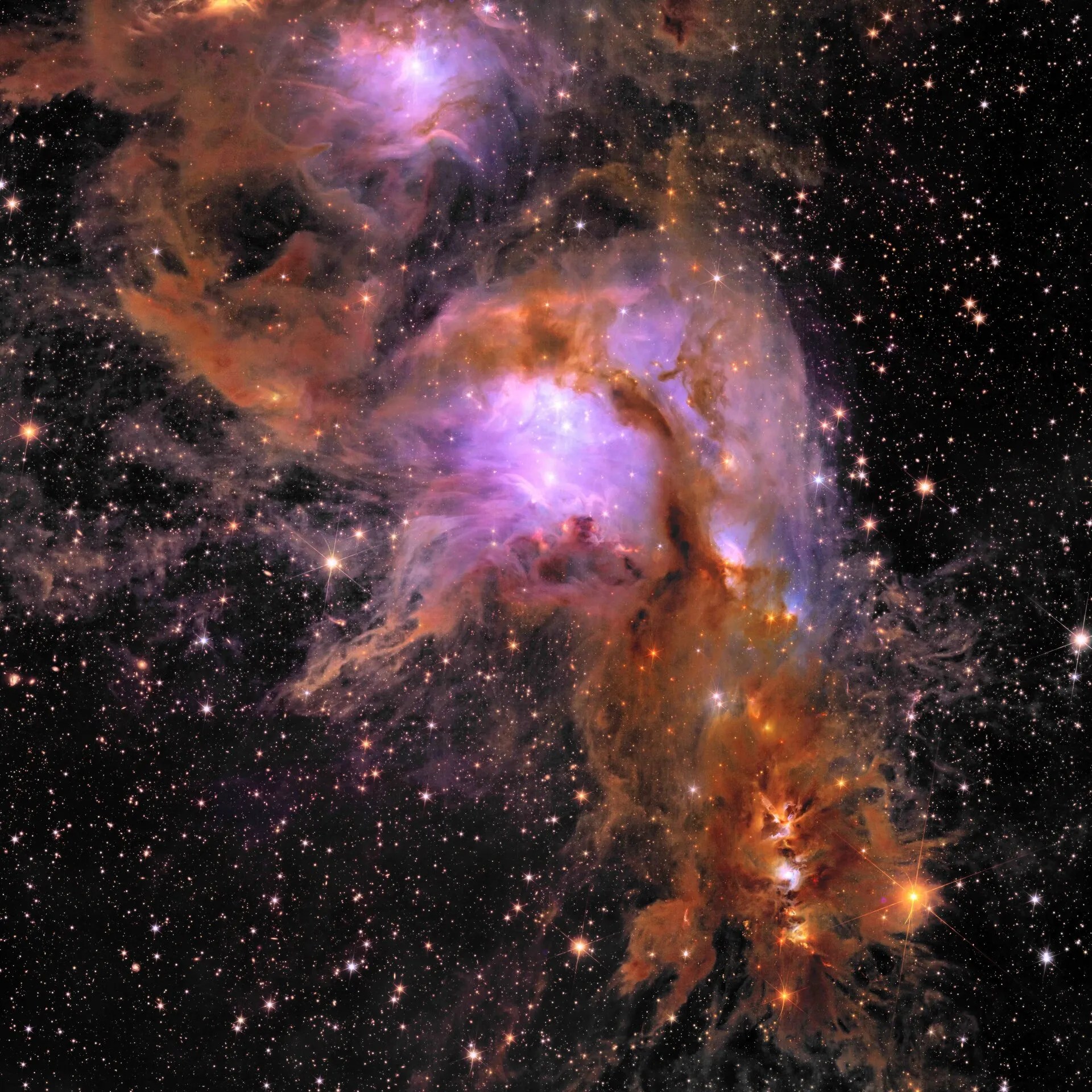

Amendment 19: D.18 Euclid General Investigator Program: Names must be omitted from References.

NASA Astronauts Practice Next Giant Leap for Artemis

Former Astronaut David R. Scott

Space Station Research Advances NASA’s Plans to Explore the Moon, Mars

PACE Celebrates National Ocean Month With Colorful Views of the Planet

NASA Mission Flies Over Arctic to Study Sea Ice Melt Causes

Webb Finds Plethora of Carbon Molecules Around Young Star

Solid State Quantum Magnetometers—Seeking out water worlds from the quantum world

The Big Event, 2025

Black Hole Week
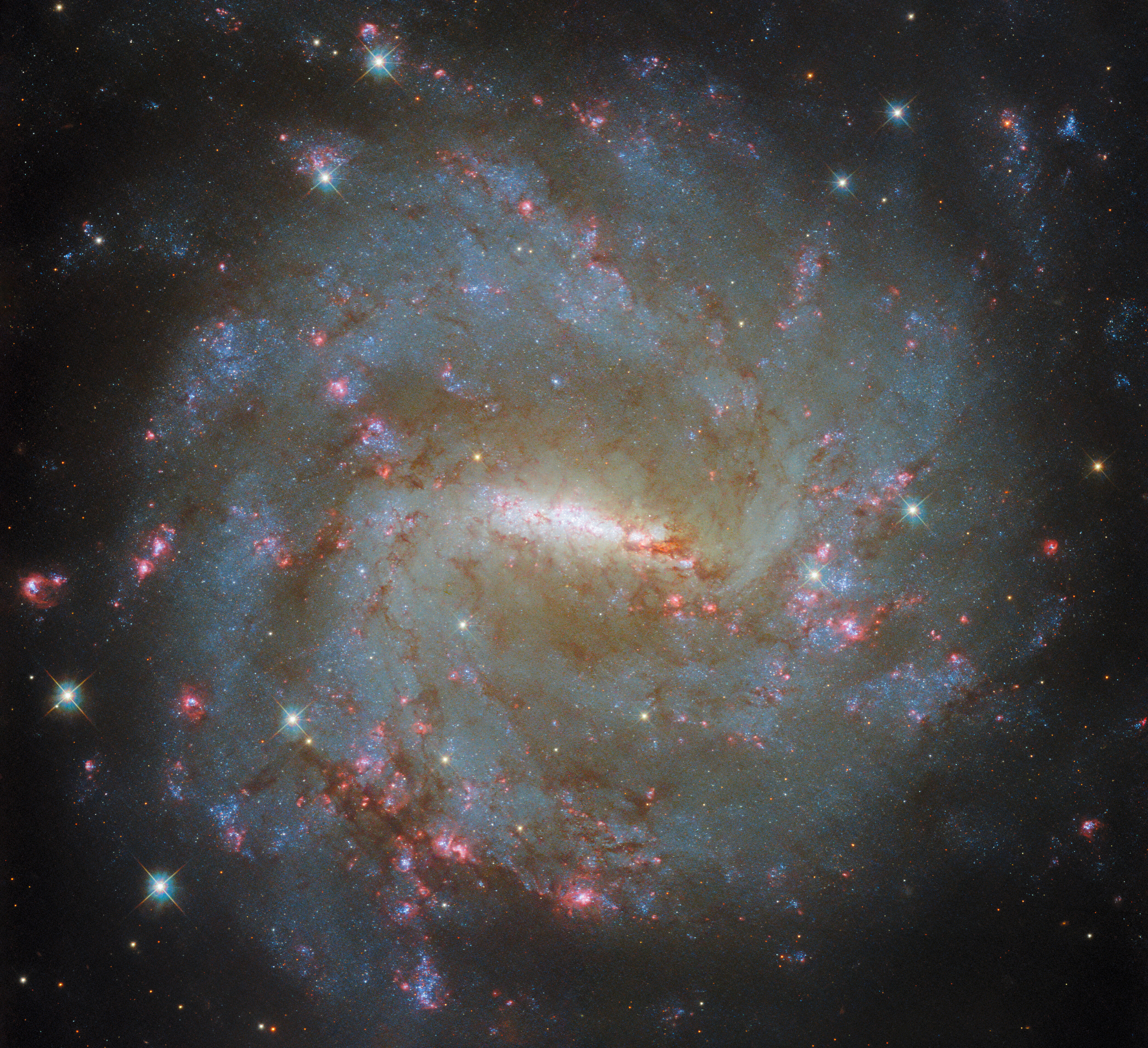
Hubble Examines a Barred Spiral’s Light
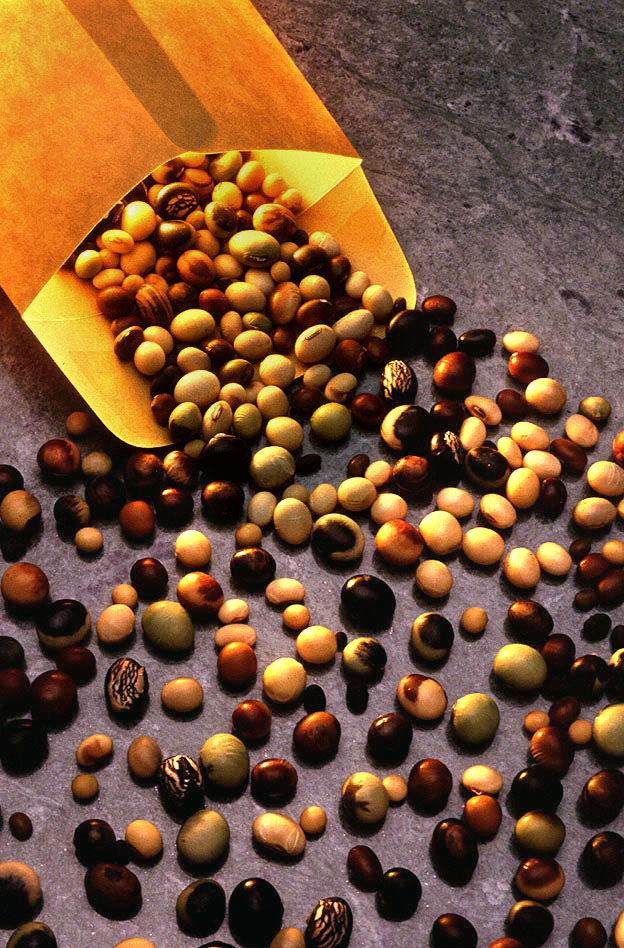
Amendment 20: F.20 MOSAICS Seed Funding formerly SMD Bridge Program Seed Funding Final Text.

ARMD Solicitations

Winners Announced in Gateways to Blue Skies Aeronautics Competition

NASA, Industry to Start Designing More Sustainable Jet Engine Core

Food Safety Program for Space Has Taken Over on Earth
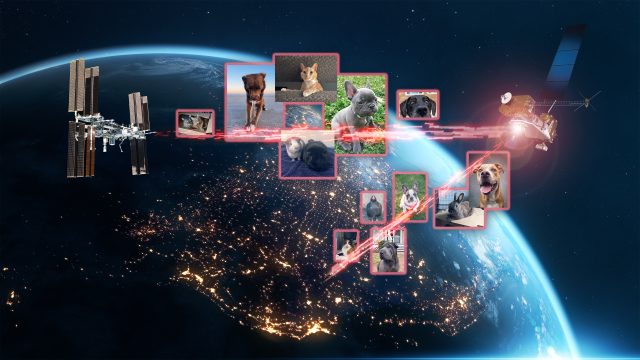
NASA’s Laser Relay System Sends Pet Imagery to, from Space Station

B.10 Heliophysics Flight Opportunities Studies Correction

Artemis Generation Shines During NASA’s 2024 Lunabotics Challenge

NASA Marshall Engineer Receives AIAA Honors Award

Meet the Simunauts: Ohio State Students to Test Space Food Solutions for NASA

Diez maneras en que los estudiantes pueden prepararse para ser astronautas

Astronauta de la NASA Marcos Berríos

Resultados científicos revolucionarios en la estación espacial de 2023
Nasa’s voyager 2 probe enters interstellar space.

For the second time in history, a human-made object has reached the space between the stars. NASA’s Voyager 2 probe now has exited the heliosphere – the protective bubble of particles and magnetic fields created by the Sun.
Members of NASA’s Voyager team will discuss the findings at a news conference at 11 a.m. EST (8 a.m. PST) today at the meeting of the American Geophysical Union (AGU) in Washington. The news conference will stream live on the agency’s website .
Comparing data from different instruments aboard the trailblazing spacecraft, mission scientists determined the probe crossed the outer edge of the heliosphere on Nov. 5. This boundary, called the heliopause, is where the tenuous, hot solar wind meets the cold, dense interstellar medium. Its twin, Voyager 1 , crossed this boundary in 2012, but Voyager 2 carries a working instrument that will provide first-of-its-kind observations of the nature of this gateway into interstellar space.
Voyager 2 now is slightly more than 11 billion miles (18 billion kilometers) from Earth. Mission operators still can communicate with Voyager 2 as it enters this new phase of its journey, but information – moving at the speed of light – takes about 16.5 hours to travel from the spacecraft to Earth. By comparison, light traveling from the Sun takes about eight minutes to reach Earth.
The most compelling evidence of Voyager 2’s exit from the heliosphere came from its onboard Plasma Science Experiment ( PLS ), an instrument that stopped working on Voyager 1 in 1980, long before that probe crossed the heliopause. Until recently, the space surrounding Voyager 2 was filled predominantly with plasma flowing out from our Sun. This outflow, called the solar wind, creates a bubble – the heliosphere – that envelopes the planets in our solar system. The PLS uses the electrical current of the plasma to detect the speed, density, temperature, pressure and flux of the solar wind. The PLS aboard Voyager 2 observed a steep decline in the speed of the solar wind particles on Nov. 5. Since that date, the plasma instrument has observed no solar wind flow in the environment around Voyager 2, which makes mission scientists confident the probe has left the heliosphere.
In addition to the plasma data, Voyager’s science team members have seen evidence from three other onboard instruments – the cosmic ray subsystem, the low energy charged particle instrument and the magnetometer – that is consistent with the conclusion that Voyager 2 has crossed the heliopause. Voyager’s team members are eager to continue to study the data from these other onboard instruments to get a clearer picture of the environment through which Voyager 2 is traveling.
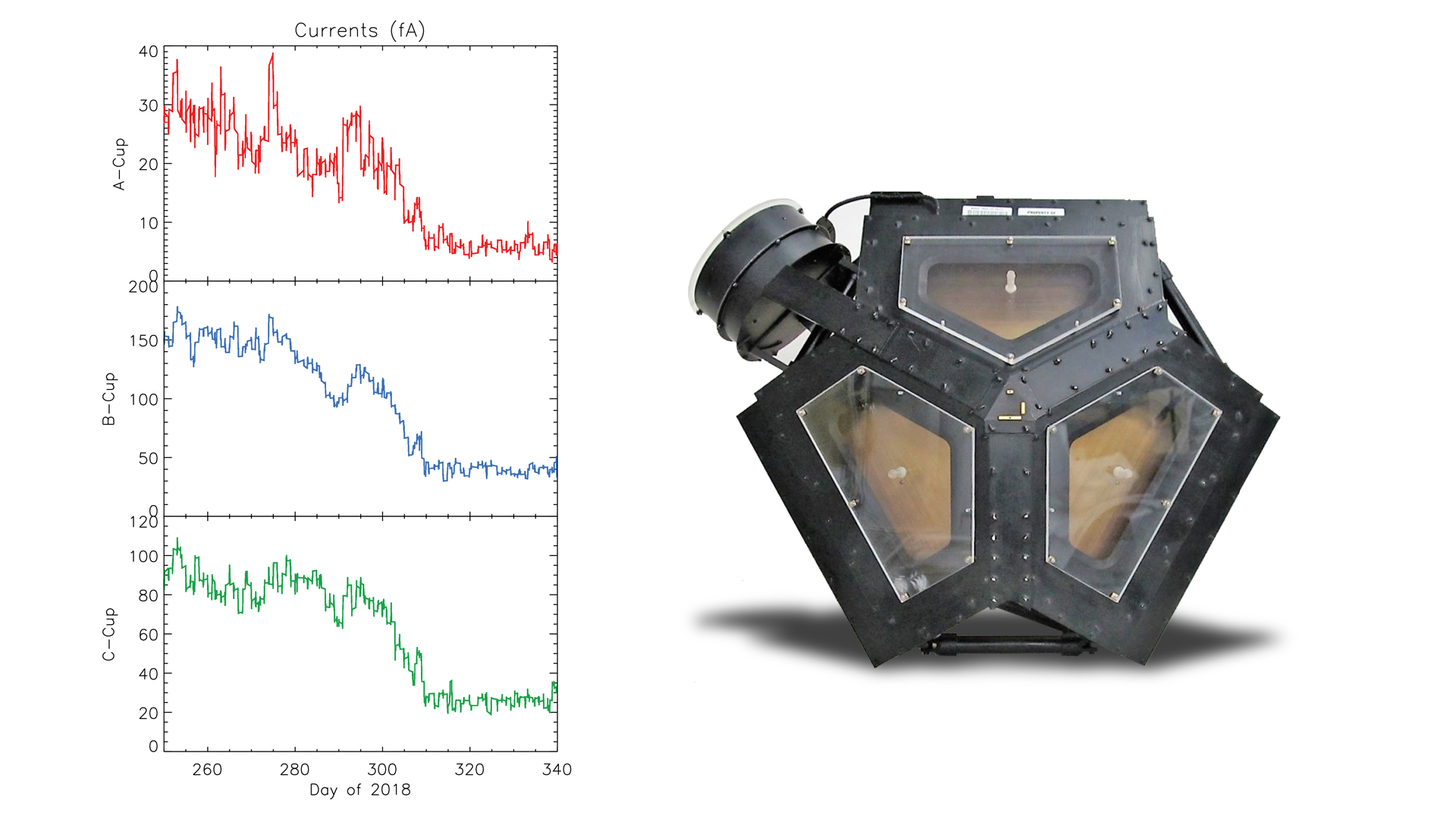
“There is still a lot to learn about the region of interstellar space immediately beyond the heliopause,” said Ed Stone, Voyager project scientist based at Caltech in Pasadena, California.
Together, the two Voyagers provide a detailed glimpse of how our heliosphere interacts with the constant interstellar wind flowing from beyond. Their observations complement data from NASA’s Interstellar Boundary Explorer ( IBEX ), a mission that is remotely sensing that boundary. NASA also is preparing an additional mission – the upcoming Interstellar Mapping and Acceleration Probe ( IMAP ), due to launch in 2024 – to capitalize on the Voyagers’ observations.
“Voyager has a very special place for us in our heliophysics fleet,” said Nicola Fox, director of the Heliophysics Division at NASA Headquarters. “Our studies start at the Sun and extend out to everything the solar wind touches. To have the Voyagers sending back information about the edge of the Sun’s influence gives us an unprecedented glimpse of truly uncharted territory.”
While the probes have left the heliosphere, Voyager 1 and Voyager 2 have not yet left the solar system, and won’t be leaving anytime soon. The boundary of the solar system is considered to be beyond the outer edge of the Oort Cloud , a collection of small objects that are still under the influence of the Sun’s gravity. The width of the Oort Cloud is not known precisely, but it is estimated to begin at about 1,000 astronomical units (AU) from the Sun and to extend to about 100,000 AU. One AU is the distance from the Sun to Earth. It will take about 300 years for Voyager 2 to reach the inner edge of the Oort Cloud and possibly 30,000 years to fly beyond it.
The Voyager probes are powered using heat from the decay of radioactive material, contained in a device called a radioisotope thermal generator ( RTG ). The power output of the RTGs diminishes by about four watts per year, which means that various parts of the Voyagers, including the cameras on both spacecraft, have been turned off over time to manage power.
“I think we’re all happy and relieved that the Voyager probes have both operated long enough to make it past this milestone,” said Suzanne Dodd, Voyager project manager at NASA’s Jet Propulsion Laboratory (JPL) in Pasadena, California. “This is what we’ve all been waiting for. Now we’re looking forward to what we’ll be able to learn from having both probes outside the heliopause.”
Voyager 2 launched in 1977, 16 days before Voyager 1, and both have traveled well beyond their original destinations. The spacecraft were built to last five years and conduct close-up studies of Jupiter and Saturn. However, as the mission continued, additional flybys of the two outermost giant planets, Uranus and Neptune, proved possible. As the spacecraft flew across the solar system, remote-control reprogramming was used to endow the Voyagers with greater capabilities than they possessed when they left Earth. Their two-planet mission became a four-planet mission. Their five-year lifespans have stretched to 41 years, making Voyager 2 NASA’s longest running mission.
The Voyager story has impacted not only generations of current and future scientists and engineers, but also Earth’s culture, including film, art and music. Each spacecraft carries a Golden Record of Earth sounds, pictures and messages. Since the spacecraft could last billions of years, these circular time capsules could one day be the only traces of human civilization.
Voyager’s mission controllers communicate with the probes using NASA’s Deep Space Network ( DSN ), a global system for communicating with interplanetary spacecraft. The DSN consists of three clusters of antennas in Goldstone, California; Madrid, Spain; and Canberra, Australia.
The Voyager Interstellar Mission is a part of NASA’s Heliophysics System Observatory, sponsored by the Heliophysics Division of NASA’s Science Mission Directorate in Washington. JPL built and operates the twin Voyager spacecraft. NASA’s DSN, managed by JPL, is an international network of antennas that supports interplanetary spacecraft missions and radio and radar astronomy observations for the exploration of the solar system and the universe. The network also supports selected Earth-orbiting missions. The Commonwealth Scientific and Industrial Research Organisation, Australia’s national science agency, operates both the Canberra Deep Space Communication Complex, part of the DSN, and the Parkes Observatory, which NASA has been using to downlink data from Voyager 2 since Nov. 8.
For more information about the Voyager mission, visit:
More information about NASA’s Heliophysics missions is available online at:
Dwayne Brown / Karen Fox Headquarters, Washington 202-358-1726 / 301-286-6284 [email protected] / [email protected] Calla Cofield Jet Propulsion Laboratory, Pasadena, Calif. 626-808-2469 [email protected]

- The Contents
- The Making of
- Where Are They Now
- Frequently Asked Questions
- Q & A with Ed Stone
golden record
Where are they now.
- frequently asked questions
- Q&A with Ed Stone
News | December 10, 2018
Nasa's voyager 2 probe enters interstellar space.
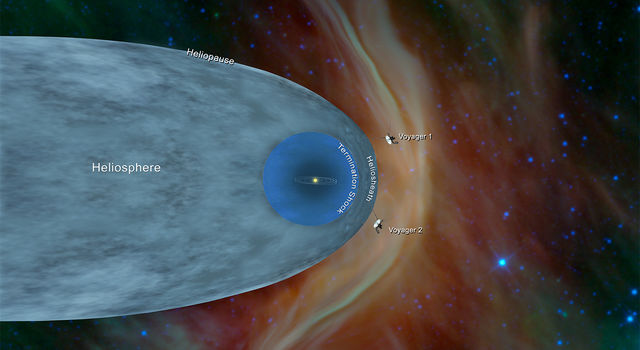
For the second time in history, a human-made object has reached the space between the stars. NASA's Voyager 2 probe now has exited the heliosphere - the protective bubble of particles and magnetic fields created by the Sun.
Members of NASA's Voyager team will discuss the findings at a news conference at 11 a.m. EST (8 a.m. PST) today at the meeting of the American Geophysical Union (AGU) in Washington. The news conference will stream live on the agency's website .
Comparing data from different instruments aboard the trailblazing spacecraft, mission scientists determined the probe crossed the outer edge of the heliosphere on Nov. 5. This boundary, called the heliopause, is where the tenuous, hot solar wind meets the cold, dense interstellar medium. Its twin, Voyager 1 , crossed this boundary in 2012, but Voyager 2 carries a working instrument that will provide first-of-its-kind observations of the nature of this gateway into interstellar space.
Voyager 2 now is slightly more than 11 billion miles (18 billion kilometers) from Earth. Mission operators still can communicate with Voyager 2 as it enters this new phase of its journey, but information - moving at the speed of light - takes about 16.5 hours to travel from the spacecraft to Earth. By comparison, light traveling from the Sun takes about eight minutes to reach Earth.
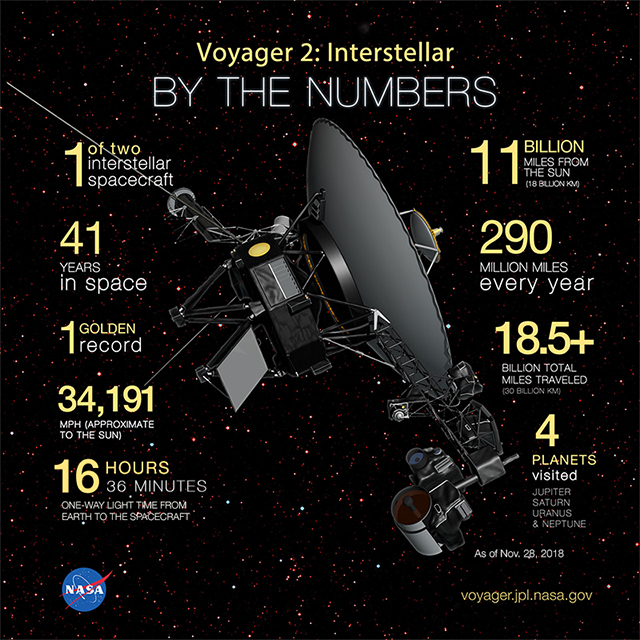
The most compelling evidence of Voyager 2's exit from the heliosphere came from its onboard Plasma Science Experiment ( PLS ), an instrument that stopped working on Voyager 1 in 1980, long before that probe crossed the heliopause. Until recently, the space surrounding Voyager 2 was filled predominantly with plasma flowing out from our Sun. This outflow, called the solar wind, creates a bubble - the heliosphere - that envelopes the planets in our solar system. The PLS uses the electrical current of the plasma to detect the speed, density, temperature, pressure and flux of the solar wind. The PLS aboard Voyager 2 observed a steep decline in the speed of the solar wind particles on Nov. 5. Since that date, the plasma instrument has observed no solar wind flow in the environment around Voyager 2, which makes mission scientists confident the probe has left the heliosphere.
"Working on Voyager makes me feel like an explorer, because everything we're seeing is new," said John Richardson, principal investigator for the PLS instrument and a principal research scientist at the Massachusetts Institute of Technology in Cambridge. "Even though Voyager 1 crossed the heliopause in 2012, it did so at a different place and a different time, and without the PLS data. So we're still seeing things that no one has seen before."
In addition to the plasma data, Voyager's science team members have seen evidence from three other onboard instruments - the cosmic ray subsystem, the low energy charged particle instrument and the magnetometer - that is consistent with the conclusion that Voyager 2 has crossed the heliopause. Voyager's team members are eager to continue to study the data from these other onboard instruments to get a clearer picture of the environment through which Voyager 2 is traveling.
"There is still a lot to learn about the region of interstellar space immediately beyond the heliopause," said Ed Stone, Voyager project scientist based at Caltech in Pasadena, California.
Together, the two Voyagers provide a detailed glimpse of how our heliosphere interacts with the constant interstellar wind flowing from beyond. Their observations complement data from NASA's Interstellar Boundary Explorer ( IBEX ), a mission that is remotely sensing that boundary. NASA also is preparing an additional mission - the upcoming Interstellar Mapping and Acceleration Probe ( IMAP ), due to launch in 2024 - to capitalize on the Voyagers' observations.
"Voyager has a very special place for us in our heliophysics fleet," said Nicola Fox, director of the Heliophysics Division at NASA Headquarters. "Our studies start at the Sun and extend out to everything the solar wind touches. To have the Voyagers sending back information about the edge of the Sun's influence gives us an unprecedented glimpse of truly uncharted territory."
While the probes have left the heliosphere, Voyager 1 and Voyager 2 have not yet left the solar system, and won't be leaving anytime soon. The boundary of the solar system is considered to be beyond the outer edge of the Oort Cloud , a collection of small objects that are still under the influence of the Sun's gravity. The width of the Oort Cloud is not known precisely, but it is estimated to begin at about 1,000 astronomical units (AU) from the Sun and to extend to about 100,000 AU. One AU is the distance from the Sun to Earth. It will take about 300 years for Voyager 2 to reach the inner edge of the Oort Cloud and possibly 30,000 years to fly beyond it.
The Voyager probes are powered using heat from the decay of radioactive material, contained in a device called a radioisotope thermal generator ( RTG ). The power output of the RTGs diminishes by about four watts per year, which means that various parts of the Voyagers, including the cameras on both spacecraft, have been turned off over time to manage power.
"I think we're all happy and relieved that the Voyager probes have both operated long enough to make it past this milestone," said Suzanne Dodd, Voyager project manager at NASA's Jet Propulsion Laboratory (JPL) in Pasadena, California. "This is what we've all been waiting for. Now we're looking forward to what we'll be able to learn from having both probes outside the heliopause."
Voyager 2 launched in 1977, 16 days before Voyager 1, and both have traveled well beyond their original destinations. The spacecraft were built to last five years and conduct close-up studies of Jupiter and Saturn. However, as the mission continued, additional flybys of the two outermost giant planets, Uranus and Neptune, proved possible. As the spacecraft flew across the solar system, remote-control reprogramming was used to endow the Voyagers with greater capabilities than they possessed when they left Earth. Their two-planet mission became a four-planet mission. Their five-year lifespans have stretched to 41 years, making Voyager 2 NASA's longest running mission.
The Voyager story has impacted not only generations of current and future scientists and engineers, but also Earth's culture, including film, art and music. Each spacecraft carries a Golden Record of Earth sounds, pictures and messages. Since the spacecraft could last billions of years, these circular time capsules could one day be the only traces of human civilization.
Voyager's mission controllers communicate with the probes using NASA's Deep Space Network ( DSN ), a global system for communicating with interplanetary spacecraft. The DSN consists of three clusters of antennas inGoldstone, California; Madrid, Spain; and Canberra, Australia.
The Voyager Interstellar Mission is a part of NASA's Heliophysics System Observatory, sponsored by the Heliophysics Division of NASA's Science Mission Directorate in Washington. JPL built and operates the twin Voyager spacecraft. NASA's DSN, managed by JPL, is an international network of antennas that supports interplanetary spacecraft missions and radio and radar astronomy observations for the exploration of the solar system and the universe. The network also supports selected Earth-orbiting missions. The Commonwealth Scientific and Industrial Research Organisation, Australia's national science agency, operates both the Canberra Deep Space Communication Complex, part of the DSN, and the Parkes Observatory, which NASA has been using to downlink data from Voyager 2 since Nov. 8.
For more information about the Voyager mission, visit:
- https://www.nasa.gov/voyager
More information about NASA's Heliophysics missions is available online at:
https://www.nasa.gov/sunearth
News Media Contact
Calla Cofield Jet Propulsion Laboratory, Pasadena, Calif. 626-808-2469 [email protected] Dwayne Brown / Karen Fox NASA Headquarters, Washington 202-358-1726 / 301-286-6284 [email protected] / [email protected]
News Release: 2018-283
Starliner Sets Off on 1st Flight With NASA Astronauts Aboard
After two previous launch attempts were called off, the Boeing-built spacecraft was headed to the International Space Station. It will stay there until at least June 14.
- Share full article
- Cape Canaveral, Fla. NASA via Reuters
- The Starliner crew prepares for takeoff. NASA, via Reuters
- The Starliner launching. Chris O'Meara/Associated Press
- Rocket boosters expend and drop off. NASA, via Reuters
- 15,000 miles per hour. NASA, via Reuters
- The Starliner crew before takeoff. Miguel J. Rodriguez Carrillo/Agence France-Presse — Getty Images
Kenneth Chang
Here’s what to know about Starliner’s flight.
After two trips to the launchpad that did not end up going to space , two NASA astronauts finally headed to orbit on Wednesday in a vehicle built by Boeing, the aerospace giant . The 15-foot-wide capsule, Starliner, provides NASA with an additional option for flying crews to and from the International Space Station, more than a decade after the space shuttles were retired. The launch is the latest step in NASA’s efforts to rely more heavily on the private sector for its human spaceflight program.
Starliner’s first trip with astronauts on board comes four years and six days after SpaceX, the other company that NASA has hired to provide astronaut rides, launched its first mission with astronauts aboard . A series of costly delays repeatedly kept astronauts from flying on the Boeing vehicle, while SpaceX, once seen as an upstart, has since flown 13 crews to orbit.
Here’s what you need to know about the flight:
At 10:52 a.m. Eastern time, the engines of an Atlas V rocket ignited, lifting the Starliner spacecraft on an arcing path to space . Wednesday’s countdown at a launchpad in Cape Canaveral, Fla., was flawless, proceeding without a hitch.
The only issue that has popped up since launching is with a “sublimator” that provides cooling in Starliner during the ascent to orbit. The device used more water than expected. Officials said it will not affect the current mission. After reaching orbit, Starliner switched to a different cooling system, a radiator, as planned.
The two crew members on board Starliner are Butch Wilmore, the commander, and Suni Williams, the pilot. They are experienced NASA astronauts; Mr. Wilmore has spent 167 days in space, and Ms. Williams 322. They will spend about a day in orbit before docking with the space station on Thursday at 12:15 p.m. They will stay until at least June 14 , maybe longer, depending on weather at the landing sites and testing of the spacecraft.
Starliner is years behind schedule, as the work by Boeing and NASA to confirm that the spacecraft was safe to fly stretched far longer than expected. Technical pitfalls included inadequate software testing, corroded propellant valves, flammable tape, a key component in the parachute system that turned out to be weaker than designed, and, most recently, a helium leak in the spacecraft’s propulsion system. Boeing fixed and studied the problems, allowing Starliner to get back to the launchpad.
The delays have left Boeing facing more than $1.4 billion in unexpected charges . The launch attempt comes during a tough 2024 for the aerospace giant . Just days into the year, a panel on the body of a Boeing 737 Max 9 blew off during an Alaska Airlines flight . The pilots safely landed the plane, and there were no major injuries, but the episode has had widespread repercussions for the company, particularly its aviation division.
A ‘milestone’ flight carried two NASA astronauts in Boeing’s Starliner spacecraft.
After two trips to the launchpad that did not end up going to space, two NASA astronauts finally headed to orbit on Wednesday in a vehicle built by Boeing, the aerospace giant.
The first trip of Starliner, a 15-foot-wide capsule, with astronauts on board comes four years and six days after SpaceX, the other company that NASA has hired to provide astronaut rides, launched its first mission with astronauts to the International Space Station. Boeing is now set to also provide that service, but a series of costly delays repeatedly kept astronauts from flying the company’s vehicle earlier. SpaceX, once seen as an upstart, has flown 13 crews to orbit in total.
The long awaited flight of the Boeing vehicle is the latest step in NASA’s efforts to rely more heavily on the private sector for its human spaceflight program.
“This is another milestone in this extraordinary history of NASA,” Bill Nelson, the NASA administrator said during a news conference after the launch.
When Starliner arrives at the space station on Thursday, it will join a SpaceX Crew Dragon capsule already docked there. NASA officials have steadfastly said that they want to have two different American spacecraft capable of taking astronauts to orbit.
“We always like to have a backup,” Mr. Nelson said. “That makes it safer for our astronauts.”
If the vehicle’s mission goes well, it will also provide some good news for Boeing, whose aviation safety record is under heavy scrutiny after a side panel of an Alaska Airlines jet blew out during a flight earlier this year.
The space division of Boeing has also been under pressure, with work on Starliner stretching years longer than either the company or NASA had expected. Technical pitfalls included inadequate software testing, corroded propellant valves, flammable tape and a key component in the parachute system that turned out to be weaker than expected.
A few minutes before launch, Butch Wilmore, the mission commander, said: “Let’s put some fire in this rocket. Let’s push it to the heavens.”
Suni Williams, the other member of the crew who serves as pilot, added, “Let’s go, Calypso, take us to space and back,” referring to the name she had given the capsule, after the ship used by the oceanographer Jacques Cousteau.
“Suni and I are honored to share this dream of spaceflight with each and every one of you. So with that, let’s get going, and let’s put some fire in this rocket and let’s push it to the heavens, while these tough Americans have prepared it to be.” “Let’s go, Calypso. Take us to space and back.”

At 10:52 a.m. Eastern time, the engines of an Atlas V rocket ignited, lifting the Starliner spacecraft on an arcing path to space. The launch and early parts of today’s flight in orbit provided a welcome relief, unfolding smoothly.
“Houston, Starliner. “Roger.”

“I’m smiling, believe me,” said Mark Nappi, the Boeing official in charge of Starliner. “But it’s a little bit of controlled emotion, because there’s a lot of phases to this mission. And we just completed the first one.”
“You got a good throttle up.” “Good throttle.” “Good SRB burnout.” “Good SRB.”

A minor glitch involved a system that provides cooling during the ride to orbit. The cooling system, known as a sublimator, used a bit more water than expected. Once in orbit, the spacecraft switched to a different cooling system, a radiator, and while engineers will investigate what happened, it will not affect the mission.
Mr. Wilmore and Ms. Williams are scheduled to dock with the station at 12:15 p.m. on Thursday.
Along the way, Mr. Wilmore and Ms. Williams will take time to test out manually flying the spacecraft, something that is usually not necessary except in emergencies. The life support systems will also be fully checked.
The astronauts will then spend at least eight days at the space station before returning to Earth. The mission has 87 test objectives altogether. “There’s a lot of, I’ll call them ergonomic types of flight test objectives,” Mr. Nappi said. “How do the seats fit? How do the suits work? How do the displays look?”
After the mission, NASA and Boeing will review data from the flight to complete certification of Starliner. The spacecraft would then be ready to begin once-a-year operational flights to ferry NASA crews for six-month stays at the space station. Each Starliner capsule — Boeing has two for orbital missions — is designed for 10 missions.

The path to Wednesday’s flight was years in the making.
In 2014, NASA awarded contracts to Boeing and SpaceX , the rocket company run by Elon Musk, to build replacements for the space shuttles that had taken astronauts to and from the space station before being retired in 2011. NASA had started paying Russia to fly its astronauts to orbit on Soyuz rockets.
Congress was skeptical, repeatedly cutting money that NASA had sought for the commercial crew program. At the time, SpaceX was ascendant, but was not the dominant force it has become today in the rocket launch industry. The selection of Boeing helped reassure lawmakers that NASA was making a sound investment.
NASA originally said Starliner and SpaceX’s Crew Dragon could be ready by 2017.
Both companies took longer than planned, a not uncommon occurrence in the aerospace industry.
But in December 2019, Boeing appeared to be in the homestretch. Then a test of Starliner with no astronauts on board went awry because of software problems, and a planned docking was called off. NASA labeled the flight a “high-visibility close call,” because the software flaws could have led to the destruction of the spacecraft if they had not been fixed before re-entry.
Boeing and NASA decided to repeat the uncrewed test, but that test was delayed by corroded propellant valves and Starliner did not launch again until May 2022.
More issues then emerged. Protective tape that was wrapped around wiring insulation turned out to be flammable, and a key but weak component in the parachute system could have broken if Starliner’s three parachutes did not deploy properly.
Those delays cost Boeing $1.4 billion, and while Starliner remained on the ground, SpaceX launched nine crewed missions for NASA (one, Crew-8, is currently docked at the station) and four additional commercial missions with non-NASA passengers aboard.
This year’s round of launch attempts started on May 6. That flight was scuttled by a misbehaving valve on the Atlas V rocket. A small helium leak was then discovered in the Starliner’s propulsion system, leading to several weeks of investigation.
A second launch attempt on Saturday ticked down to 3 minutes and 50 seconds before liftoff, until the computers that autonomously handle the final parts of the launch sequence encountered a problem and halted the countdown.
Over the next few days, technicians replaced a faulty power component, setting the stage for the successful launch on Wednesday.
Niraj Chokshi contributed reporting.
Advertisement
The post-launch news conference is over. For the next day, you won’t see any live video of Starliner. Although there are cameras aboard, there is no communications system for sending it back to Earth in real time. Instead, it will have to be downloaded after Starliner docks at the International Space Station. NASA TV coverage of the spacecraft’s arrival will start at 11:15 a.m. Eastern time on Thursday. Docking is scheduled for 12:15 p.m.
Starliner will remain at the International Space Station until at least June 14. It might stay longer depending on weather at the landing site and how testing of the spacecraft goes.
“So far, the vehicle is doing great,” said Steve Stich, the program manager at NASA for the commercial crew program.
The only issue that has popped up so far during the spaceflight is with the “sublimator,” which provided cooling in Starliner during its ascent to orbit. It used more water than expected. That’s something to investigate, but it’s not a big problem that affects the current mission. Once in orbit, Starliner switched to a different cooling system, a radiator, as planned.
A NASA post-launch news conference is beginning. “This is another milestone in this extraordinary history of NASA,” Bill Nelson, the NASA administrator, says.
Starliner is currently at a slightly lower altitude than the International Space Station, which means it is moving faster than the space station and catching up. As it gets closer, it will raise its orbit to match speed.
Elon Musk, chief executive of SpaceX, took some potshots at Boeing and Starliner last month. Today, he was more complimentary .
Congratulations on a successful launch! https://t.co/DiwBo6LheW — Elon Musk (@elonmusk) June 5, 2024
Michael Roston
Musk also has another major spaceflight on his mind. Early on Thursday morning, his company SpaceX will conduct the fourth test flight of Starship, its large, next-generation reusable spacecraft that NASA is relying on to get to the moon. You can look back at the third flight here .
NASA has concluded its official live coverage of the Starliner launch. But if you can’t get enough, NASA will be providing ongoing video coverage of Wilmore and Williams’ flight to the International Space Station, which will take about 24 hours. Docking is scheduled for 12:15 p.m. on Thursday.
This mission is essentially a shakedown flight to verify that the spacecraft is ready for humans. Some systems, notably life support and manual flying, cannot be tested until astronauts are aboard. NASA will use data from this flight to complete certification. If all goes well, that will be finished later this year, and the first operational flight will be in Feburary.
The burn has completed. Flight controllers at launch control are clapping and shaking hands. Starliner is now on its way to the International Space Station. It is scheduled to dock there tomorrow at 12:15 p.m. Eastern time.
Starliner’s orbital insertion burn has started.
Suni Williams is the first woman to take part in the test flight of an American spacecraft taking astronauts to space for the first time. The first four such test flights — Mercury, Gemini, Apollo and the space shuttles — preceded any American women going to space. The fifth, SpaceX’s Crew Dragon in 2020, carried Bob Behnken and Doug Hurley. Starliner is the sixth such spacecraft.
How NASA ended up paying for private rides to orbit.
NASA owned the space shuttles.
The shuttles were built by Rockwell International, but NASA’s engineers largely dictated the design, and once the shuttles were delivered, they became the property of the U.S. government — launched and operated by NASA.
That was NASA’s old way of doing business.
Nowadays, the space agency’s human spaceflight program is trying to do more by doing less on its own.
The Boeing Starliner is the latest step in that direction. NASA does not own Starliner but is, in essence, renting the spacecraft from Boeing for about a week so that two NASA astronauts can get to the space station.
The rationale is that private companies can come up with innovative solutions that are better and cheaper, and the companies can then sell those same products to customers other than NASA — a win-win.
That formula has certainly proved to work with SpaceX, the rocket company founded by Elon Musk. When SpaceX first won a NASA contract, it had not yet successfully sent anything to space. NASA was key in the development of SpaceX’s Falcon 9 rocket, which not only now launches cargo and astronauts for NASA but also has captured a domineering slice of the commercial satellite-launching business.
In 2014, NASA selected SpaceX and Boeing to ferry astronauts to the International Space Station. SpaceX flew its first crewed mission in 2020 and has now launched people to orbit 13 times, including four commercial missions for non-NASA customers.
For Boeing, however, Starliner has turned out to be a long-delayed, costly endeavor, even though NASA is paying more to Boeing than to SpaceX. Back in 2010, Boeing announced that it planned to fly space tourists to the space station. Now, Boeing says it is focused on NASA’s business — six operational flights after the test mission.
“The private astronaut missions are of an interest later in the decade,” said Mark Nappi, program manager of the Starliner program at Boeing.
Despite the mixed results for the companies, NASA has expanded its commercial approach. SpaceX and Blue Origin , the rocket company started by Jeff Bezos, have contracts to build landers to carry NASA astronauts to the surface of the moon in the coming years.
NASA is also looking farther out into the solar system. Last month, the space agency commissioned nine companies to study how they might provide services for future science missions to Mars.
During the launch, the astronauts, Butch Wilmore and Suni Williams, used paper checklists, which are simpler and easier to read than digital versions. Now that they’re in orbit, they’ve switched to tablets.
Some of the astronauts’ luggage is not going to make it to the space station.
On Friday, NASA announced some shuffling of the cargo that Starliner is taking to the space station.
The astronauts on board, Butch Wilmore and Suni Williams, will give up some personal items during their short stay in orbit to make room for a spare part for a water recycling system on the International Space Station.
The space station receives regular deliveries of supplies and equipment. Much of it arrives packed into cargo vehicles launched from the United States and Russia. That includes a Russian Progress spacecraft that docked Saturday morning with about three tons of food, fuel and other supplies.
Other times, items are packed along with astronaut crews headed to space.
On Wednesday last week, a pump failed in the system on the space station that collects and processes the astronauts’ urine, the first step in turning it back into drinkable water. That pump had been expected to last until the fall, and a replacement was set to be delivered by a cargo spacecraft in August.
“It failed a little bit early, which put us in a position where we’d have to store an awful lot of urine,” Dana Weigel, NASA’s program manager for the space station, said during a news conference on Friday. “Obviously, adding two more crew members to that further constrains the storage capability we have on board.”
The pump equipment, which weighs about 150 pounds, was flown to the Kennedy Space Center and loaded onto Starliner. Two suitcases of clothing and toiletries for Mr. Wilmore and Ms. Williams were removed to make room for it.
“The key for the flight was not to perturb the mass properties,” Ms. Weigel said.
The astronauts will use supplies and clothing already at the space station during their scheduled stay of about a week.
Starliner has successfully separated from the Atlas V second stage. In about 16 minutes, Starliner will fire its thrusters to put itself in a stable orbit around Earth.
The second stage engines have shut down, right on time. Three minutes of coasting before Starliner separates from the rocket.
It is now 96 miles above Earth, moving at more than 15,000 miles per hour.
To reach orbit — that is, to go fast enough in order to not fall back down to Earth — Starliner will need to reach about 17,500 miles per hour. Everything continues to go well.
The spacecraft is now traveling 12,600 miles per hour.
The first stage of the Atlas V rocket has done its job, shutting down and dropping off, and the two engines of the second stage have ignited.
The solid rocket boosters have expended and dropped off. Everything continues to look good.
One minute until liftoff.
Here’s the revised flight plan for the Starliner’s journey.
If all goes well, an Atlas V rocket carrying Starliner will lift off on Wednesday at 10:52 a.m. Eastern time from the Cape Canaveral Space Force Station in Florida. It must launch at the exact moment — what is known as an instantaneous launch window — that would allow it to catch up with the International Space Station.
Starliner will detach from the second stage of the rocket 15 minutes after launch. Sixteen minutes later, Starliner will fire its thrusters to enter a stable orbit around Earth.
Starliner will take more than a day to meet up with the space station. During that time, two NASA astronauts, Butch Wilmore and Suni Williams, will perform tests, including manually flying the spacecraft.
On Thursday, the spacecraft will slowly approach the station, with docking scheduled for 12:15 p.m. Eastern time.
Starliner, along with Mr. Wilmore and Ms. Williams, will stay at the space station for about a week, allowing for more tests of the spacecraft and its systems.
“We’re pretty much on a timeline, making sure we’re going to get everything done,” Ms. Williams said during a Q. and A. session before the postponed launch attempt on May 6.
Does NASA need another ride to the space station? Elon Musk says no.
As SpaceX noted on X last Thursday, May 30 was the fourth anniversary of its equivalent of this week’s Starliner mission — the first launch of the company’s Crew Dragon spacecraft with two NASA astronauts aboard.
Today marks the fourth anniversary of Falcon 9 launching @NASA ’s Demo-2 mission to the @space_station , returning human spaceflight to the United States pic.twitter.com/jzwyCwam3l — SpaceX (@SpaceX) May 30, 2024
The space agency boisterously celebrated the achievement, which ended NASA’s nearly decade-long dependence on Russian Soyuz rockets for getting its astronauts to orbit.
That has rendered the upcoming debut of Starliner almost an afterthought, with Boeing seemingly light-years behind SpaceX.
Since the first test flight in 2020, SpaceX has flown eight operational missions for NASA, each taking four astronauts to the International Space Station for six-month stays. The SpaceX missions have unfolded smoothly and reliably at a cost much lower than what Boeing will charge.
So why does NASA continue to spend time, effort and money on Starliner? Why not cancel that contract and rely solely on SpaceX?
Indeed, before Starliner’s scrubbed launch attempt on May 6, Elon Musk, the founder of SpaceX, posted on his social media site, X, “The world doesn’t need another capsule.”
In a separate posting, Mr. Musk sharply criticized Boeing. “Although Boeing got $4.2 billion to develop an astronaut capsule and SpaceX only got $2.6 billion, SpaceX finished 4 years sooner,” he wrote. “Too many non-technical managers at Boeing.”
A Boeing spokeswoman declined to comment.
But while Mr. Musk might think Starliner is superfluous, NASA officials have often said it is important to have contingency options if something goes wrong.
“This will give us that additional capability because we always look for a backup,” Bill Nelson, the NASA administrator, said during a news conference on Friday.
Dana Weigel, program manager of the space station for NASA, gave the example of when a Soyuz docked at the space station suffered a coolant leak in 2022 .
Had the Soyuz been the only means of transportation, that could have led to a situation where the lives of the astronauts were genuinely at risk. But a SpaceX Crew Dragon was also docked there, providing a backup.
“If we had to bring the whole crew home on a SpaceX Dragon, we could have done that,” Ms. Weigel said.
For NASA, the more options it has, the better. If Crew Dragon or Starliner suffered a failure and were grounded, the other would still be available. That lessens the possibility that the United States might again have to rely on Russians and the whims of President Vladimir V. Putin for launching people to space.
“The more dissimilar capabilities you have, the more robust you are for dealing with issues,” Ms. Weigel said.
SpaceX has also launched four private astronaut missions using the same Crew Dragons. The first one, Inspiration4, was financed by Jared Isaacman, a billionaire entrepreneur. While that flight went only to orbit and not to the I.S.S., Axiom Space of Houston has since flown three private astronaut missions to the space station, with a fourth that might launch as soon as August.
Mr. Isaacman is also planning to return to space later this year with another Crew Dragon mission, called Polaris Dawn, which is aiming to perform the first spacewalk during a commercial spaceflight.
Niraj Chokshi
Reporting on Boeing and other companies in the aviation industry.
Starliner has cost Boeing $1.4 billion more than it planned to spend.
Wednesday’s Starliner launch has been almost a decade in the making, but it has not been an easy ride for Boeing. In 2014, NASA awarded contracts to Boeing and SpaceX to transport astronauts to the International Space Station. SpaceX, which received far less funding, carried astronauts into orbit for the first time in 2020. Boeing hopes to achieve that milestone on Thursday.
Along the way, the aerospace giant has faced many setbacks, including years of delays and more than $1.4 billion in unexpected charges. In securities filings, Boeing has blamed engineering issues and supply chain problems; higher-than-expected costs for development, certification and testing; and even a problem identified in testing by a parachute supplier.
“Building rockets and spacecraft is no trivial task,” said Ron Epstein, a financial analyst at Bank of America. “It’s just taken Boeing longer and cost them more to do than they thought.”
The setbacks underscore a broader frustration for Boeing’s defense and space business: fixed-price contracts, under which contractors bear responsibility for higher-than-expected costs. Under a cost-plus contract, on the other hand, the government is responsible for covering unexpected expenses.
Fixed-price contracts are financially risky for companies if costs rise or delays materialize — and Boeing has struggled under them in recent years. Such contracts accounted for about 58 percent of the revenues coming into its defense and space unit last year, and the company has said that it is working to limit its reliance on them. (SpaceX, by contrast, has thrived on fixed-price contracts.)
“We have a couple of fixed-price development programs we have to just finish and never do them again,” Dave Calhoun, Boeing’s chief executive, said at an investor conference last summer. “It doesn’t work for us, and it doesn’t work for our customers, in my not-so-humble opinion.”
Although the company has faced delays, a Boeing representative said in a statement in May that the company remained “committed to providing NASA with a crew access capability to low Earth orbit” and that it “will continue to fulfill our contractual obligations.”
Boeing’s Starliner capsule has had a long, difficult road to human spaceflight.
In late 2019, Boeing appeared to have a good chance at beating SpaceX to become the first private U.S. company to take astronauts to orbit.
But in the four and a half years since, a lot has gone wrong. Here’s a timeline of the setbacks that have caused Boeing to fall so far behind SpaceX in providing American astronauts a ride to low Earth orbit.
December 2019: A ‘high-visibility close call’
On Dec. 20, 2019, Boeing looked to be in the homestretch.
A Starliner capsule — the same spacecraft that is to take the NASA astronauts Butch Wilmore and Suni Williams to the space station on Saturday — was on the launchpad atop an Atlas V rocket.
The test flight to the space station had no astronauts on board, and its mission was to assess the spacecraft’s navigation, propulsion and docking systems. If the flight were to pass this last technical hurdle, a trip with astronauts aboard could take place within months.
The Atlas V rocket launched flawlessly, releasing Starliner.
And then the mission immediately went awry .
The spacecraft’s clock was set to the wrong time, making Starliner think it was in the wrong location. The capsule fired its thrusters to try to get to where it thought it should be. At the same time, a communications glitch thwarted efforts by flight controllers at mission control to diagnose and fix the problem.
Starliner used up too much propellant, and the planned docking at the space station was called off.
During the troubleshooting process, Boeing engineers discovered another software error that would have fired the wrong thrusters during a maneuver leading up to re-entry. NASA labeled the incident a “high-visibility close call” that could have destroyed the spacecraft if the errors had not been patched from the ground during the flight.
An investigation revealed multiple failures in Boeing’s processes that should have caught the mistakes before the launch. An exhaustive audit reviewed one million lines of software code.
NASA officials admitted that maybe they had placed too much trust in Boeing, which had decades of experience working with NASA.
Summer 2021: Corrosion on the launchpad
NASA and the company decided that a second uncrewed test was needed before a flight could be made with astronauts aboard. The spacecraft was rolled onto the launchpad in July, but a problem aboard the space station prompted a delay to early August. Then, ahead of an Aug. 4 launch attempt, mission managers discovered corroded propellant valves on Starliner that would not open. The test flight was called off, and another lengthy round of troubleshooting followed.
May 2022: Another launch, more problems
The second uncrewed test finally launched on May 19, 2022.
During a maneuver to put Starliner in a stable orbit, two thrusters failed, but the spacecraft was able to compensate. It proceeded to dock at the space station and returned to Earth successfully.
July 2023: Parachutes and tape
Before the test flight with astronauts aboard, then scheduled for July 2023, two more issues emerged. Protective tape that was wrapped around wiring insulation turned out to be flammable, and a key component in the parachute system was weaker than designed, meaning it could break if Starliner’s three parachutes did not deploy properly.
About a mile of the tape was replaced, and the parachute design was upgraded, strengthened and retested.
May 2024: Still not ready to fly
“We’ve been taking our time to go through everything methodically, because it is a test flight and we want it to go well,” Steve Stich, the program manager for NASA’s commercial crew program, said during a news conference on May 3.
Mark Nappi, the program manager at Boeing for Starliner, said: “We are ready to perform the test flight. And I’ve never felt readier on any mission that I’ve ever participated in.”
But Starliner was still not quite ready.
The countdown on May 6 was proceeding smoothly until a balky valve on the second stage of the Atlas V rocket — unrelated to Starliner — started acting up, vibrating audibly about 40 times per second.
The launch was called off, and the rocket needed to be taken off the launchpad for the valve to be replaced. That work was completed within a few days.
But a thornier issue emerged.
As the propellants were drained from the tanks of the Atlas V rocket, engineers discovered a small helium leak in Starliner’s propulsion system.
Helium, an inert gas, is used to push propellants to the thrusters. If too much is lost, the thrusters may not work properly.
The leak was traced to a seal on a helium line leading to one of 28 small thrusters known as reaction control system engines.
“Much like you would have on any piece of your plumbing at home, a faucet or anything like that,” Mr. Stich said during a telephone news conference on May 24. “There’s a seal that keeps that interface tight.”
Tests showed no leaks in the seals leading to the other 27 reaction control system engines, and engineers were confident that the single leak was manageable. There are no plans to replace the seal, which would require pulling Starliner off the Atlas V rocket and would lead to an even lengthier delay for the flight.
“We could handle this particular leak if that leak rate were to grow even up to 100 times,” Mr. Stich said.
The helium leak led NASA and Boeing to take a wider look at Starliner’s propulsion system, which revealed a “design vulnerability,” Mr. Stich said. If a series of unlikely failures occurred, the spacecraft might not be able to bring the astronauts safely back to Earth.
If there were problems with the larger engines intended to be fired for a maneuver to drop the spacecraft out of orbit, one of the backup plans was to use eight of the smaller thrusters. However, the analysis showed that an additional failure might mean there would be only four available.
The engineers then developed another backup plan to bring Starliner out of orbit with only the four thrusters. NASA and Boeing officials said that, after weeks of studying the problem, they were confident they could manage problems that might arise from the leak.
On Saturday, Mr. Wilmore and Ms. Williams were ready to fly. Starliner was ready too, but the computers controlling the final minutes of the countdown encountered a problem, and the launch was called off again.
Everyone is back for another attempt on Wednesday.
Space is a small but important part of Boeing’s business.
Boeing is best known for its airplanes, but it has a long history of space-related work. That includes substantial contributions to the first crewed mission to the moon and to the International Space Station.
Today, the company is helping to build an essential component of NASA’s Space Launch System, or S.L.S., a rocket designed to carry spacecraft, cargo and astronauts to the moon. In 2022, the agency successfully launched Artemis I, a test flight with no astronauts aboard, which included a mammoth booster stage built by Boeing. The booster helped the rocket to reach orbit. The company is working on similar sections for future missions involving S.L.S., too. The next, Artemis II, could send four astronauts around the moon in 2025.
In addition to that work, Boeing and Lockheed Martin have a joint venture known as United Launch Alliance, or U.L.A., which was founded in 2006 and employs about 2,700 people. That company’s rockets have sent more than 100 satellites into space, and its Atlas V vehicle is lifting the Starliner into orbit on Wednesday.
Boeing also makes satellites of all sizes for government and commercial operators, as well as missile warning and other satellite systems.
That space-related work is distinct from Boeing’s other endeavors. The company is divided into three units: one focused on making commercial airplanes; another focused on making military aircraft, missiles and space programs; and a third that provides services and maintenance to Boeing’s customers.
The units share some broad similarities, but are run independently, with different processes, products and cultures. Much of the company’s commercial-plane assembly takes place in the Seattle area or in North Charleston, S.C. Work on Boeing’s space programs is more diffuse and carried out across the country, including in Alabama, California, Louisiana, Colorado, Texas and Florida.
“They’re basically businesses within a business,” Ken Herbert, an analyst with RBC Capital, said of Boeing’s space programs.
Those programs, including Boeing’s work on Starliner, are prestigious, but still account for a small fraction of the business generated by Boeing’s defense unit, which itself is smaller than its commercial airplane business.
What is Boeing’s Starliner spacecraft?
At first glance, the Boeing Starliner looks much like the command module used by NASA during the Apollo moon missions in the 1960s and the 1970s.
That’s not a random coincidence. The ability of that cone-shaped vehicle to keep astronauts safe during re-entry into the Earth’s atmosphere is well documented.
At 15 feet in diameter, Starliner is slightly bigger than the Apollo spacecraft. The capsule and the service module — the part of the spacecraft that provides power and propulsion during the flight before being discarded just before landing — are together 16.5 feet in height.
The spacecraft is large enough to carry up to seven astronauts, but NASA missions will carry a crew of four. Boeing has the option of selling a fifth seat to a private customer who wants to tag along.
Each Starliner capsule is designed to be used for up to 10 missions; by contrast, the service module — the cylindrical component below the capsule, containing power, propulsion and life support systems — burns up in the atmosphere, and a new one is needed for each trip.
Boeing has built three Starliner capsules. The first was used only to demonstrate the ability to quickly fly astronauts to safety in case of an emergency on the launchpad. That capsule will not be used for any missions to orbit.
The Starliner used for this mission previously flew in space in 2020 during the first test flight with no crew, which was cut short because of technical problems. Suni Williams, the pilot for this mission, has named the spacecraft Calypso, a nod to the research ship used by Jacques Cousteau, a French undersea explorer.
The third Starliner, still unnamed, was used for the second test without crew in 2022 and will fly four astronauts to the International Space Station for the first operational mission, scheduled for next year.

IMAGES
VIDEO
COMMENTS
Both Voyager 1 and Voyager 2 have reached "Interstellar space" and each continue their unique journey through the Universe. In the NASA Eyes on the Solar System app, you can see the real spacecraft trajectories of the Voyagers, which are updated every five minutes. Distance and velocities are updated in real-time.
NASA's Voyager 2 is the second spacecraft to enter interstellar space. On Dec. 10, 2018, the spacecraft joined its twin - Voyager 1 - as the only human-made objects to enter the space between the stars. Voyager 2 is the only spacecraft to study all four of the solar system's giant planets at close range. Voyager 2 discovered a 14th moon at ...
A NASA image of one of the twin Voyager space probes. The Jet Propulsion Laboratory lost contact with Voyager 2 on July 21 after mistakenly pointing its antenna 2 degrees away from Earth.
This is a real-time indicator of Voyager 2's distance from Earth in astronomical units (AU) and either miles (mi) or kilometers (km). Note: Because Earth moves around the sun faster than Voyager 2 is speeding away from the inner solar system, the distance between Earth and the spacecraft actually decreases at certain times of year.
A series of planned commands sent to NASA's Voyager 2 spacecraft July 21 inadvertently caused the antenna to point 2 degrees away from Earth. As a result, Voyager 2 is currently unable to receive commands or transmit data back to Earth. Voyager 2 is located more than 12.3 billion miles (19.9 billion kilometers) from Earth, and this change has ...
Credit: NASA/JPL-Caltech. UPDATE, Aug. 4, 2023: NASA has reestablished full communications with Voyager 2. The agency's Deep Space Network facility in Canberra, Australia, sent the equivalent of an interstellar "shout" more than 12.3 billion miles (19.9 billion kilometers) to Voyager 2, instructing the spacecraft to reorient itself and ...
Aug. 4, 2023. It took an interstellar "shout" across the solar system. But NASA's Jet Propulsion Laboratory said on Friday that it re-established full communications with Voyager 2, an aging ...
After weeks of giving Earth the silent treatment, NASA's Voyager 2 spacecraft is once again communicating with mission control from billions of miles away.. All it took was for the ground team to ...
NASA's Voyager 2 probe now has exited the heliosphere - the protective bubble of particles and magnetic fields created by the Sun. Members of NASA's Voyager team will discuss the findings at a news conference at 11 a.m. EST (8 a.m. PST) today at the meeting of the American Geophysical Union (AGU) in Washington. ... Voyager 2 now is ...
Where is Voyager 2 now? Voyager 2 is 12.4 billion miles from Earth. The spacecraft is one of two twin probes launched in 1977 from Cape Canaveral, Florida, to explore planets in the outer solar ...
But on Tuesday, Nasa said a signal from Voyager 2 was picked up during a regular scan of the sky. Where is Voyager 2 now? Voyager 2 is more than 12.3 billion miles (19.9 billion km) from Earth ...
NASA's Voyager 2 spacecraft, which has been probing the outer bounds of the solar system for over 45 years, is running out of power. ... But engineers have now found a way to tap reserve power ...
For the second time in history, a human-made object has reached the space between the stars. NASA's Voyager 2 probe now has exited the heliosphere - the protective bubble of particles and magnetic fields created by the Sun.. Members of NASA's Voyager team will discuss the findings at a news conference at 11 a.m. EST (8 a.m. PST) today at the meeting of the American Geophysical Union (AGU) in ...
Now, one probe has achieved a milestone in exploration: On December 10, NASA announced that Voyager 2 has entered interstellar space, six years after Voyager 1 first crossed the threshold. The ...
For the first time since November, NASA's Voyager 1 spacecraft is returning usable data about the health and status of its onboard engineering systems.The next step is to enable the spacecraft to begin returning science data again. The probe and its twin, Voyager 2, are the only spacecraft to ever fly in interstellar space (the space between stars).
Mission Overview. The twin Voyager 1 and 2 spacecraft are exploring where nothing from Earth has flown before. Continuing on their more-than-40-year journey since their 1977 launches, they each are much farther away from Earth and the sun than Pluto. In August 2012, Voyager 1 made the historic entry into interstellar space, the region between ...
For the first time in five months, NASA's Voyager 1 spacecraft is returning usable data about the health and status of its onboard engineering systems. The next step is to enable the spacecraft to begin returning science data again. The probe and its twin, Voyager 2, are the only spacecraft to depart the Solar System and fly in interstellar ...
NASA's Voyager 2 spacecraft today entered the observatory phase of its flyby of Neptune, signaling the beginning of its final planetary encounter after nearly 12 years of exploring the outer solar system. Voyager mission controllers at the Jet Propulsion Laboratory in Pasadena, Calif., will now be tracking the spacecraft around the clock as ...
Boeing Starliner team detects new helium leaks en route to space station. Story by Kristin Fisher, CNN. • 15h • 2 min read. The spacecraft and crew safely reach their destination after NASA ...
Voyager 1, one of the celebrated twin spacecraft that was the first to reach interstellar space, has finally resumed beaming science data back to Earth after a 6-month communications blackout, NASA announced this week. After a corrupted chip rendered Voyager 1's transmissions unintelligible in November 2023, engineers nursed the spacecraft ...
After years of delay, Boeing's Starliner is flying people for the first time with two NASA astronauts heading to the International Space Station. The rocket lifted off from Cape Canaveral, Fla.
The team is evaluating the upcoming launch opportunities on Sunday, June 2; Wednesday, June 5; and Thursday, June 6. NASA will update the launch coverage advisory timing as soon as possible. NASA will provide live coverage of prelaunch and launch activities for the agency's Boeing Crew Flight Test, which will carry NASA astronauts Butch ...
Voyager 1 and its twin Voyager 2 are the only spacecraft ever to operate outside the heliosphere, the protective bubble of particles and magnetic fields generated by the Sun. Voyager 1 reached the interstellar boundary in 2012, while Voyager 2 (traveling slower and in a different direction than its twin) reached it in 2018. Mission Type.
USA TODAY is providing live coverage of the Boeing Starliner launch, which is scheduled to liftoff Wednesday, June 5 at 10:52 a.m. ET from Cape Canaveral Space Force Station in Florida. You can ...
For the second time in history, a human-made object has reached the space between the stars. NASA's Voyager 2 probe now has exited the heliosphere - the protective bubble of particles and magnetic fields created by the Sun.. Members of NASA's Voyager team will discuss the findings at a news conference at 11 a.m. EST (8 a.m. PST) today at the meeting of the American Geophysical Union (AGU ...
For the second time in history, a human-made object has reached the space between the stars. NASA's Voyager 2 probe now has exited the heliosphere - the protective bubble of particles and magnetic fields created by the Sun.. Members of NASA's Voyager team will discuss the findings at a news conference at 11 a.m. EST (8 a.m. PST) today at the meeting of the American Geophysical Union (AGU) in ...
The Starliner capsule approaching the International Space Station during a test flight without crew in 2022. JSC/NASA. If all goes well, an Atlas V rocket carrying Starliner will lift off on ...